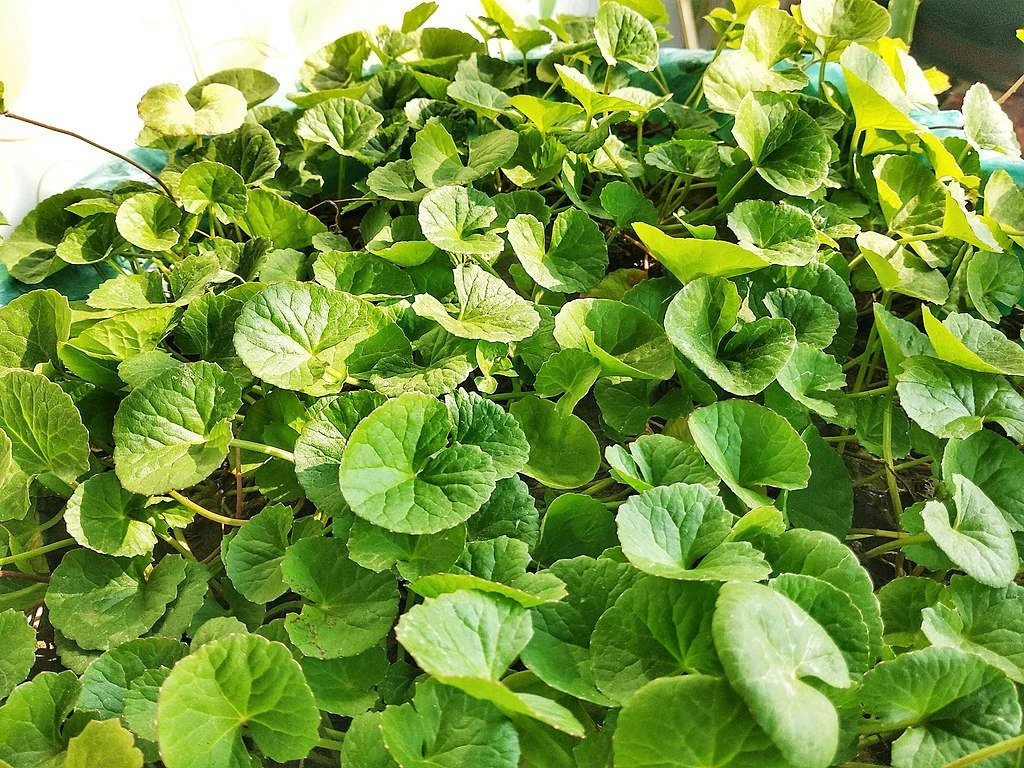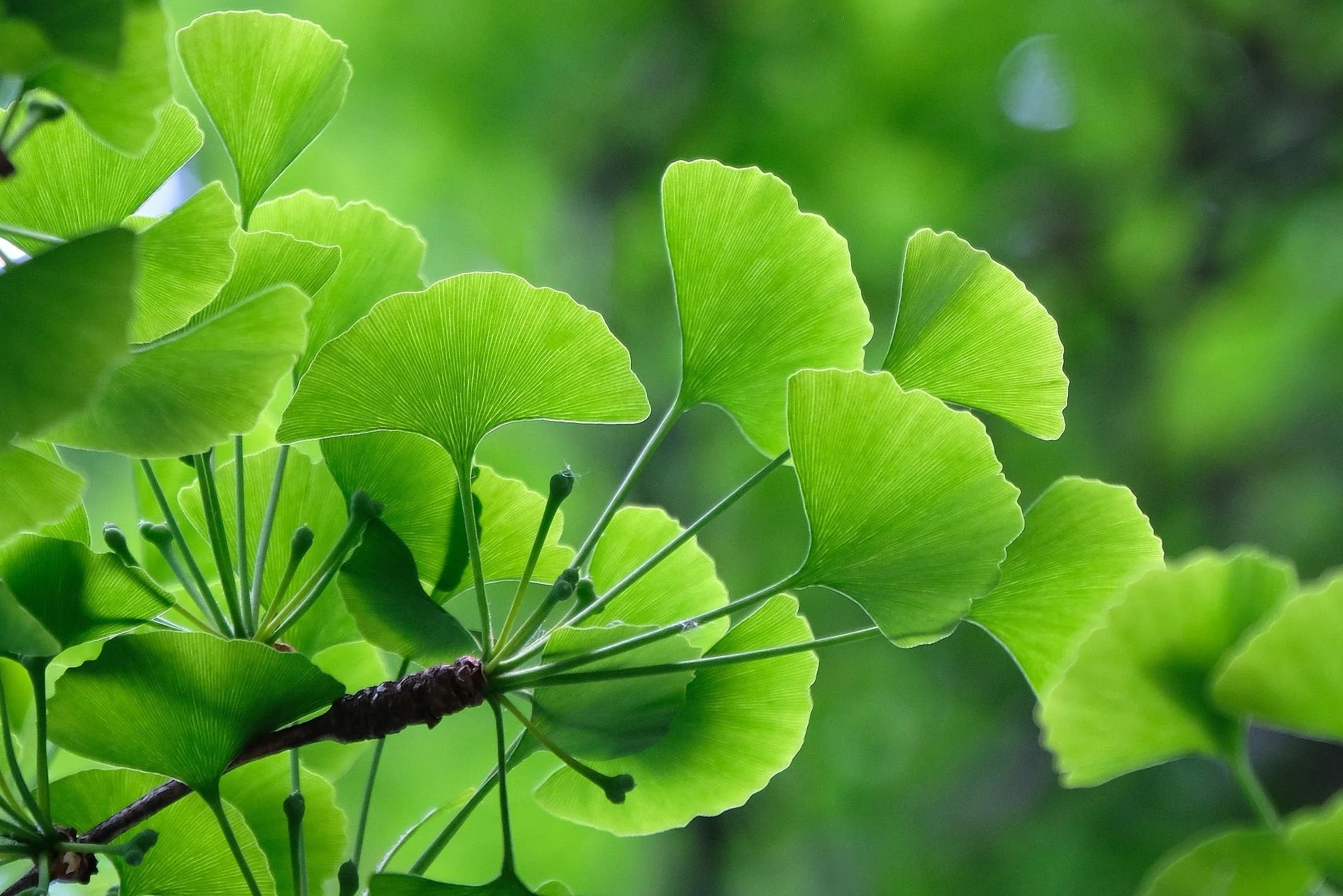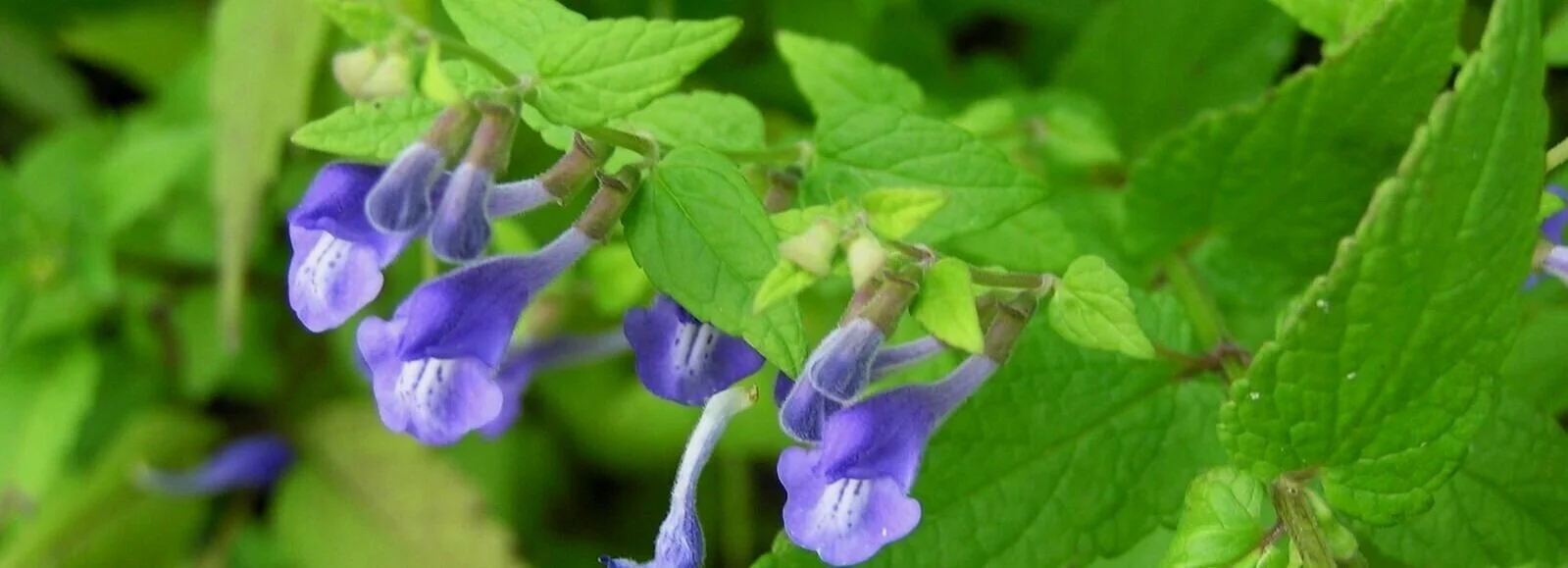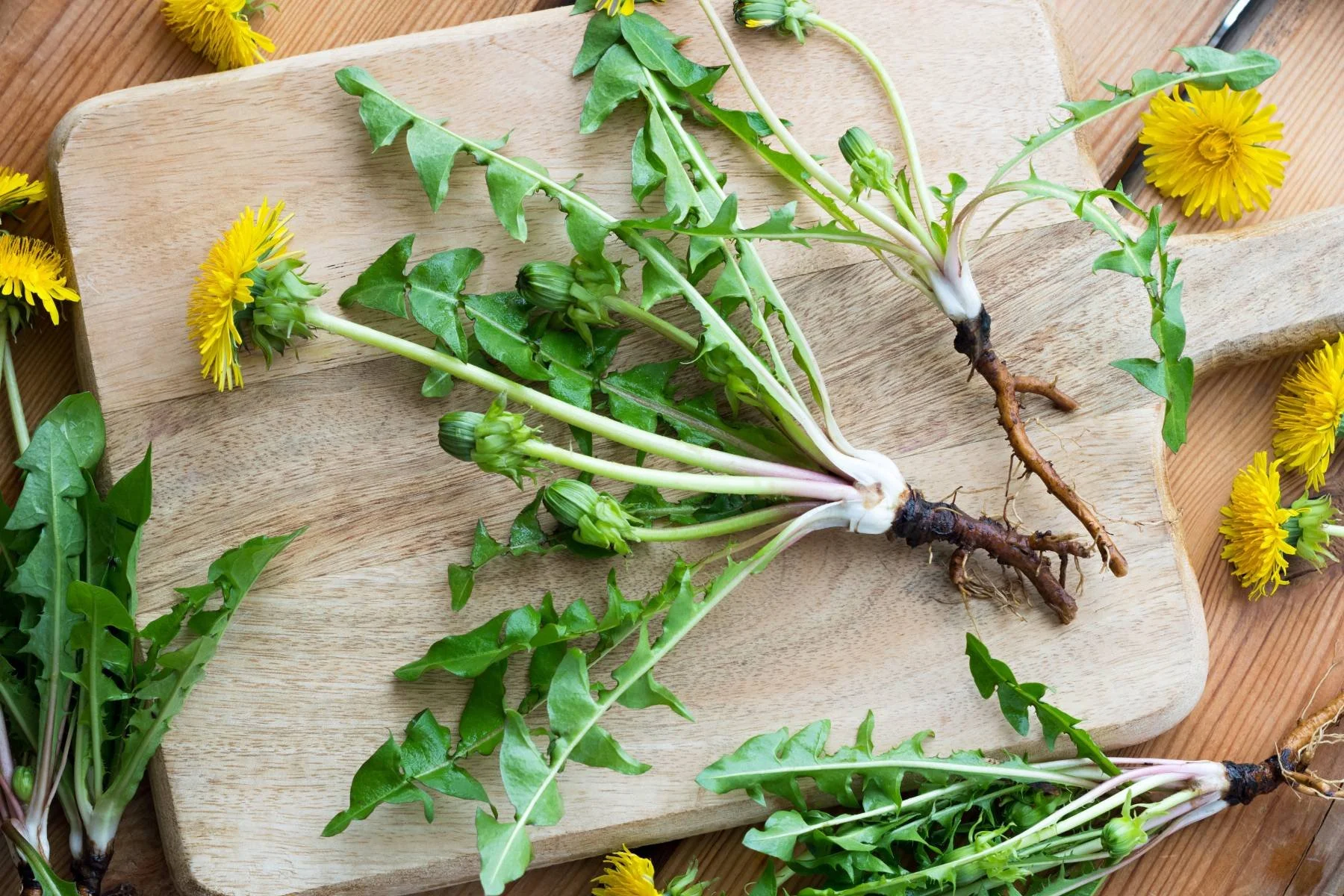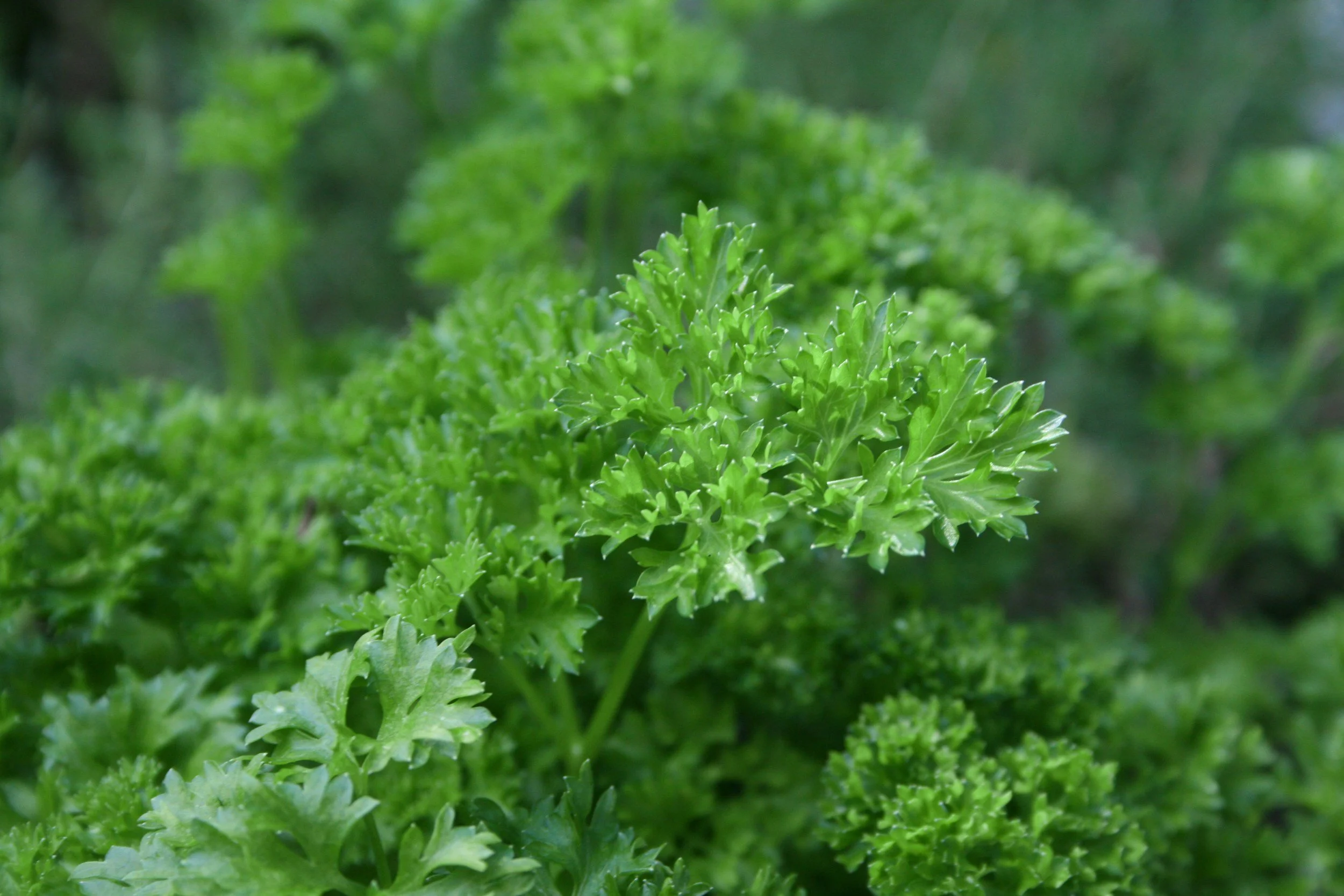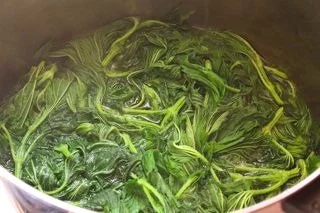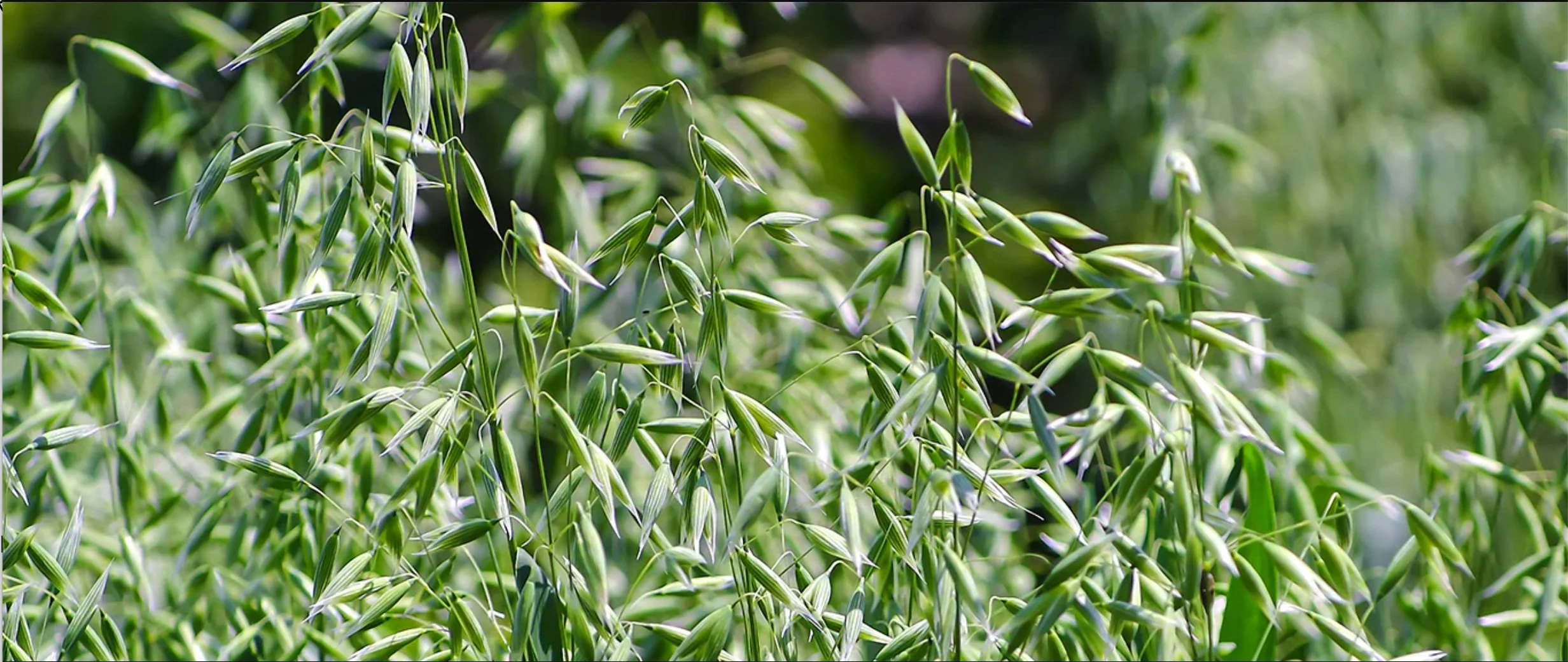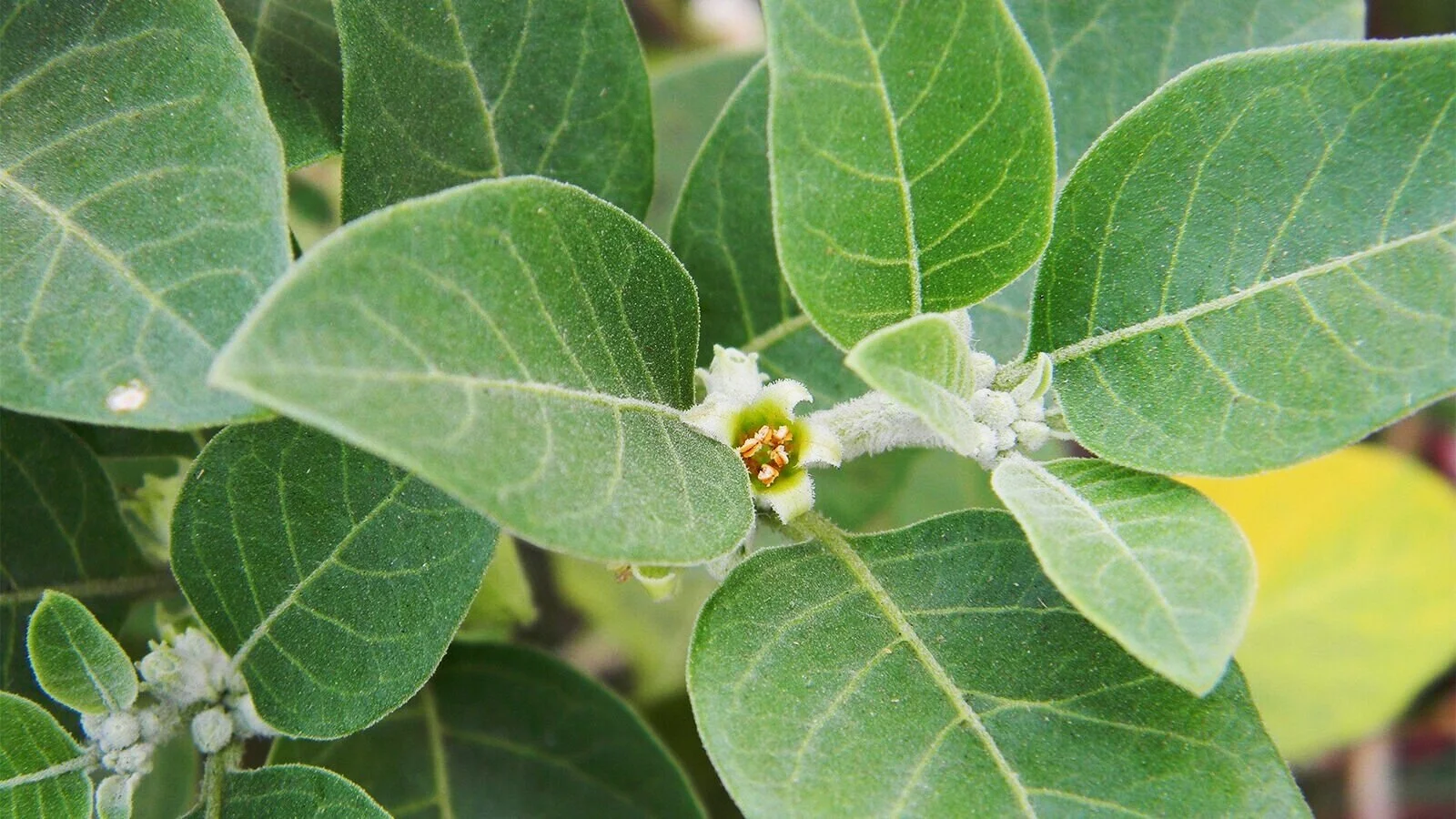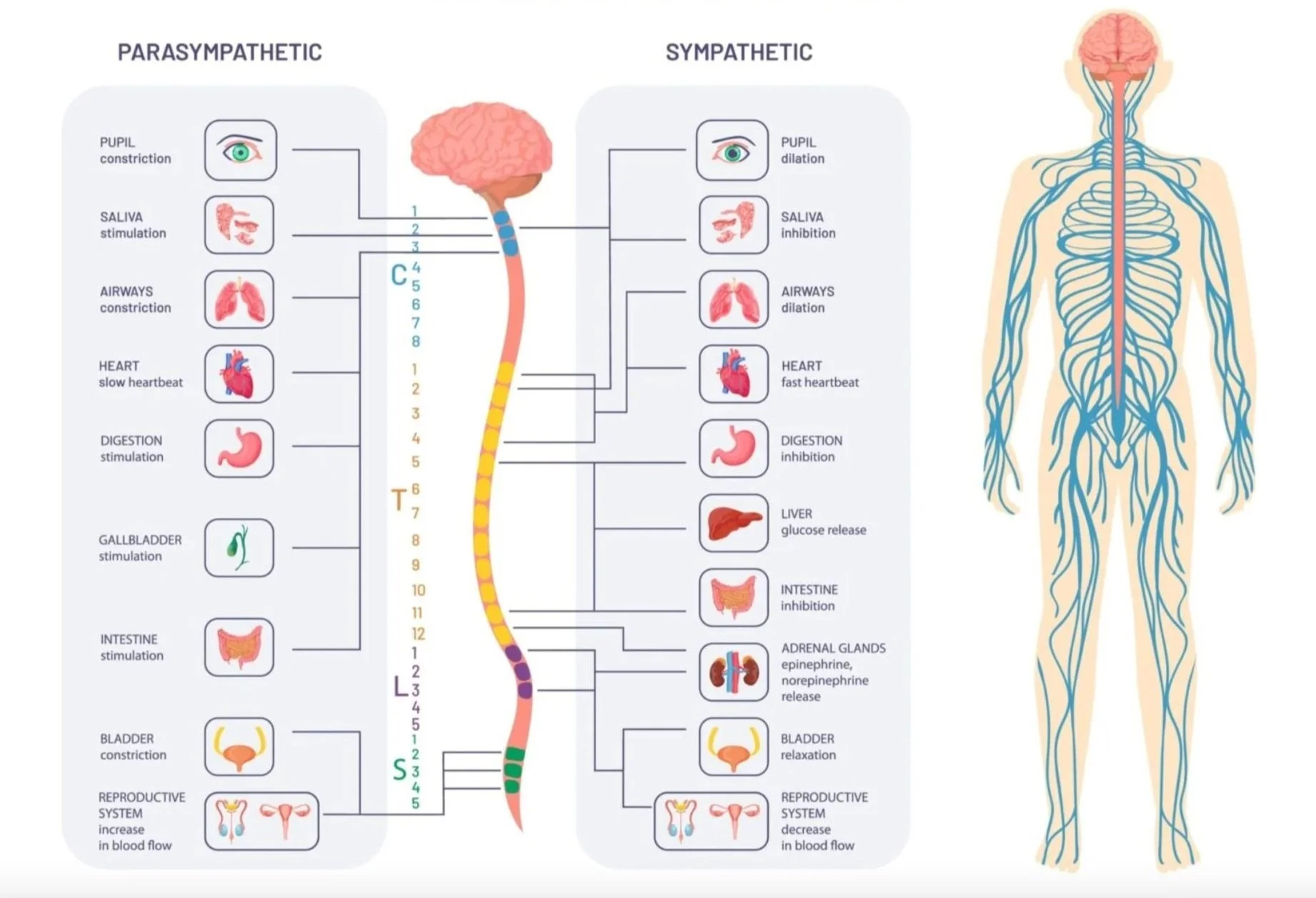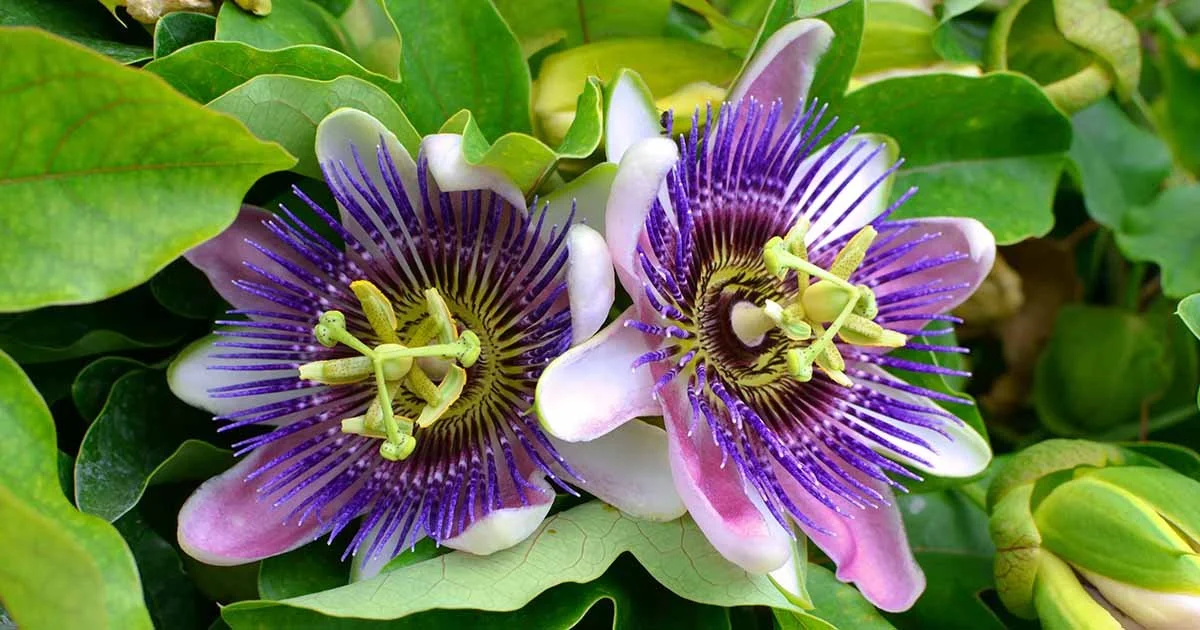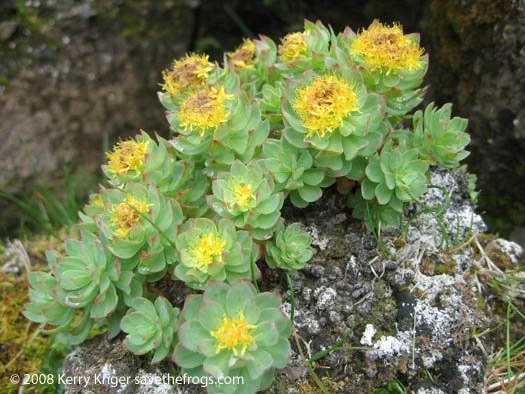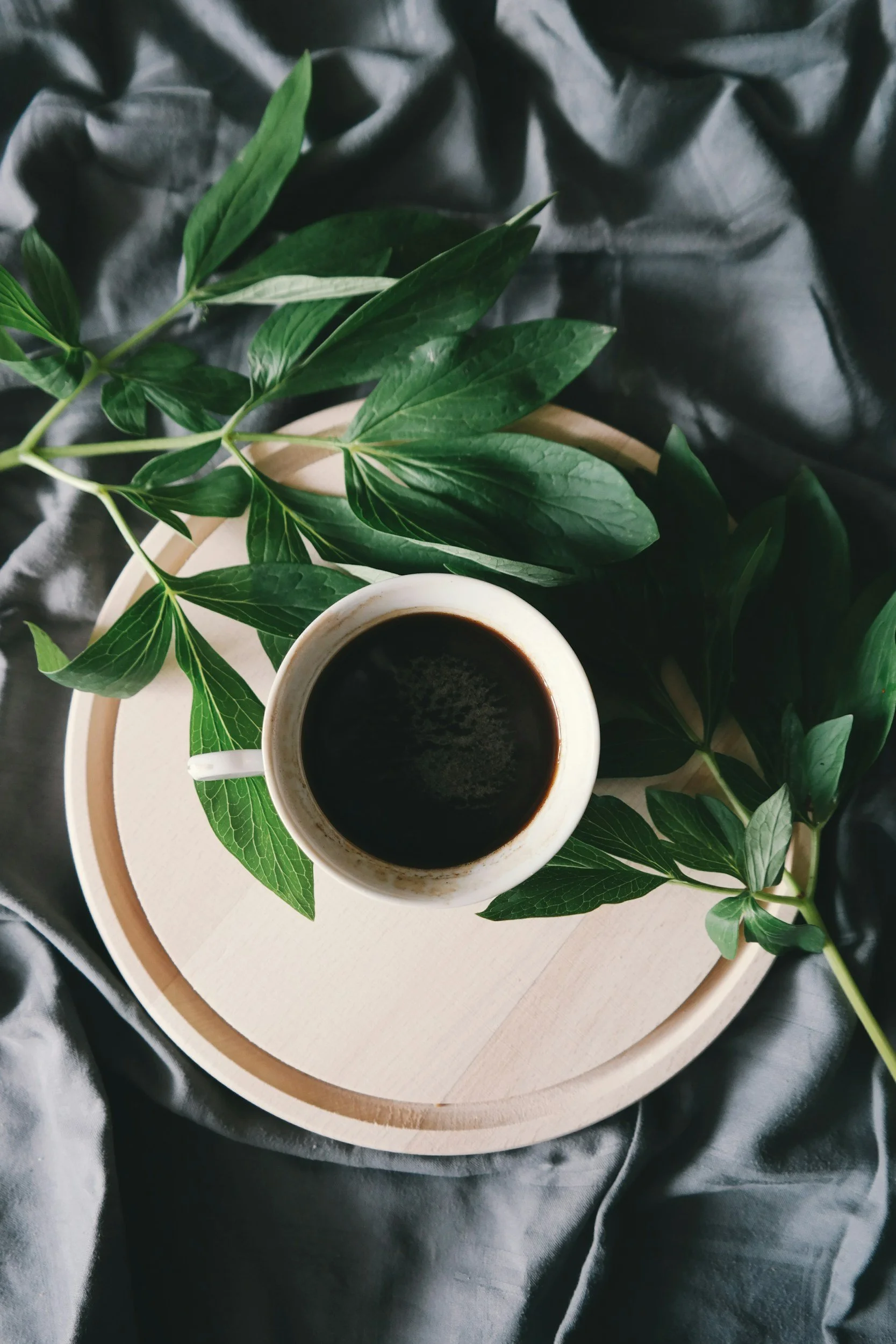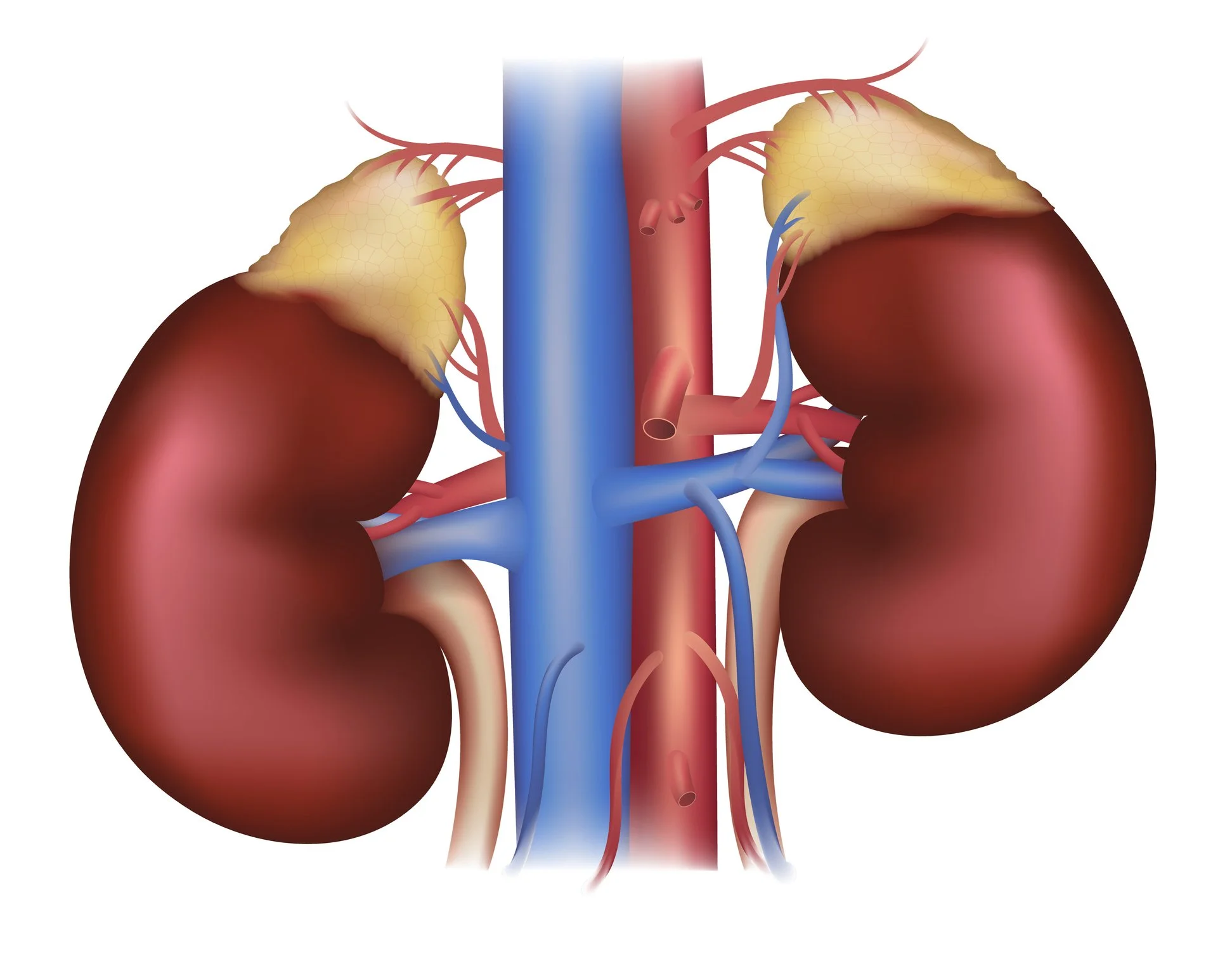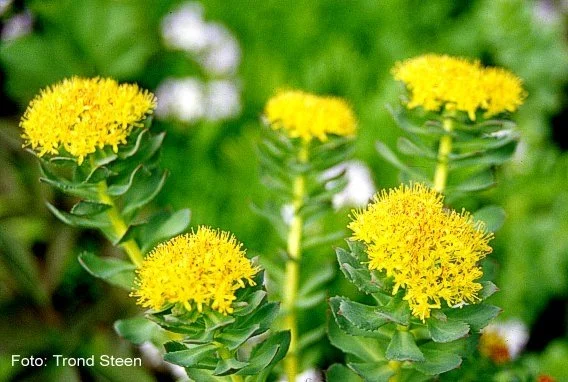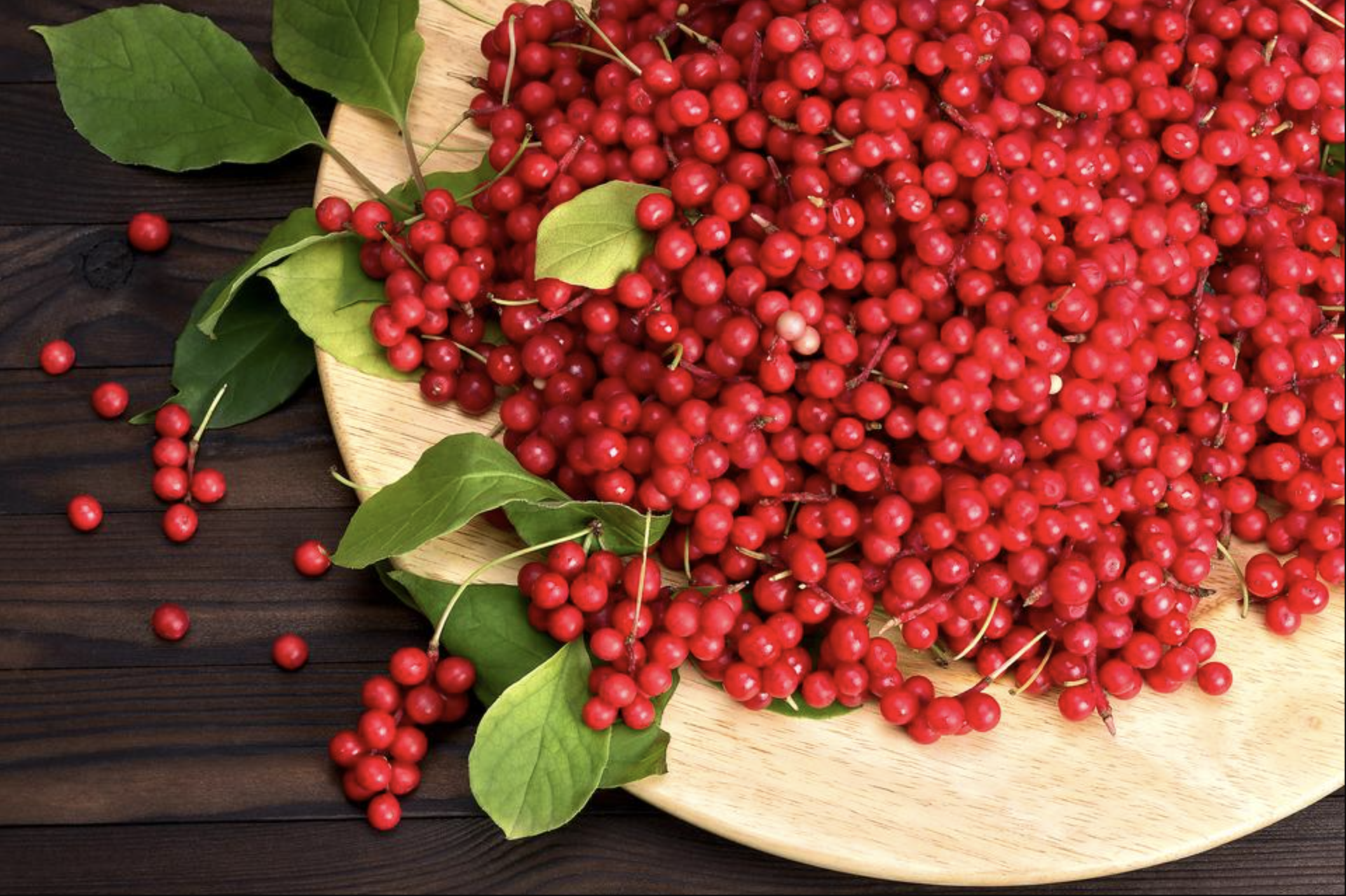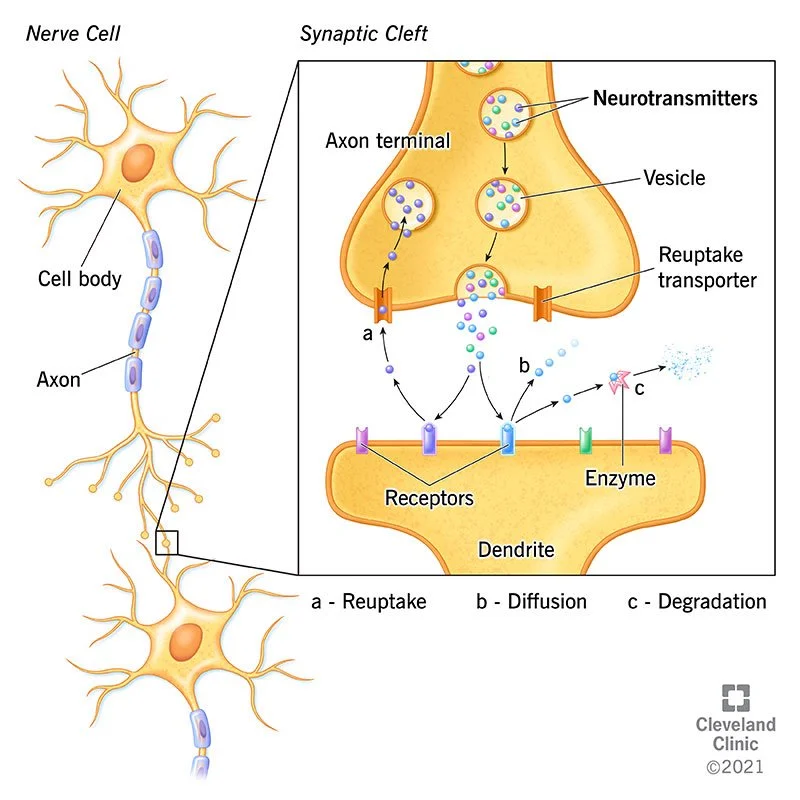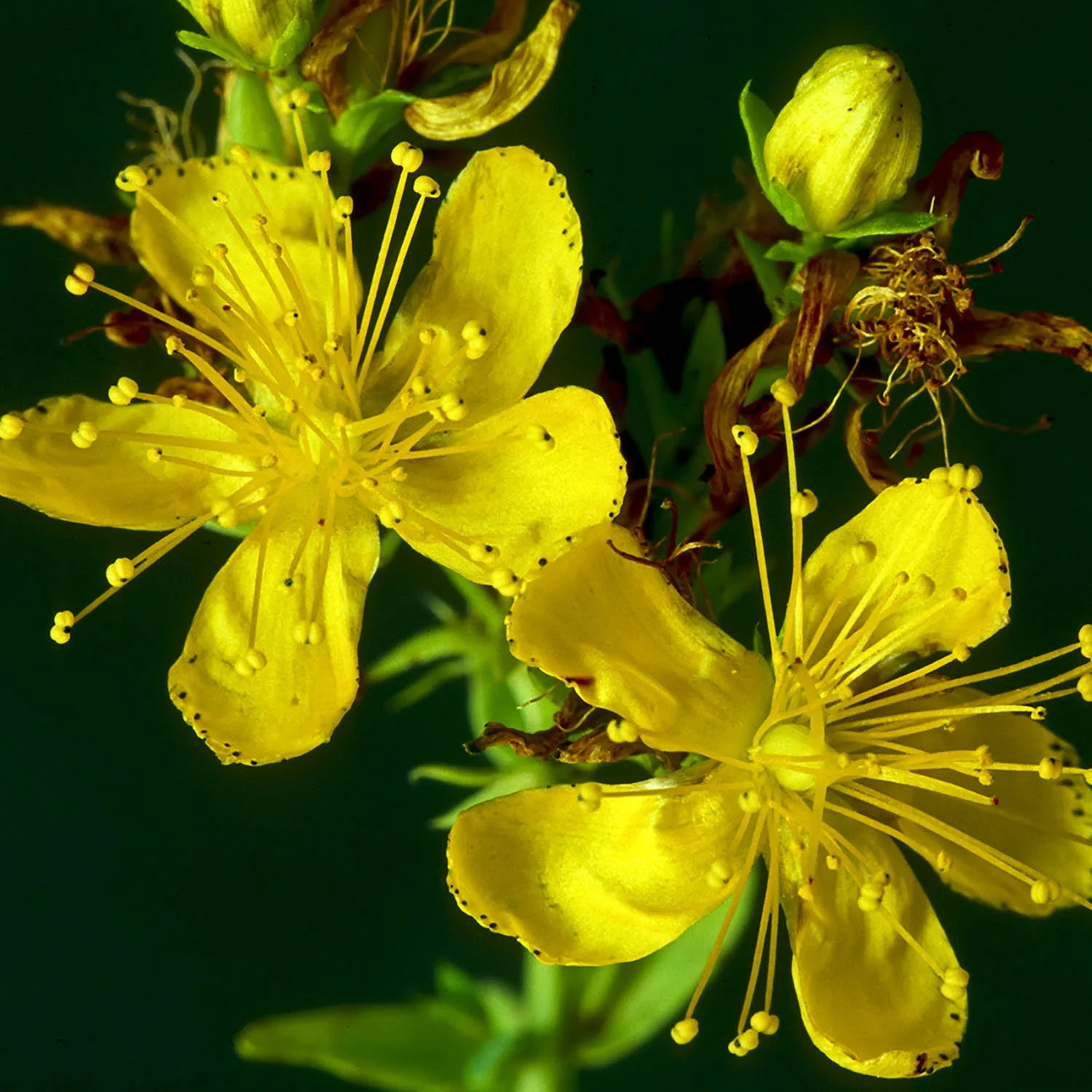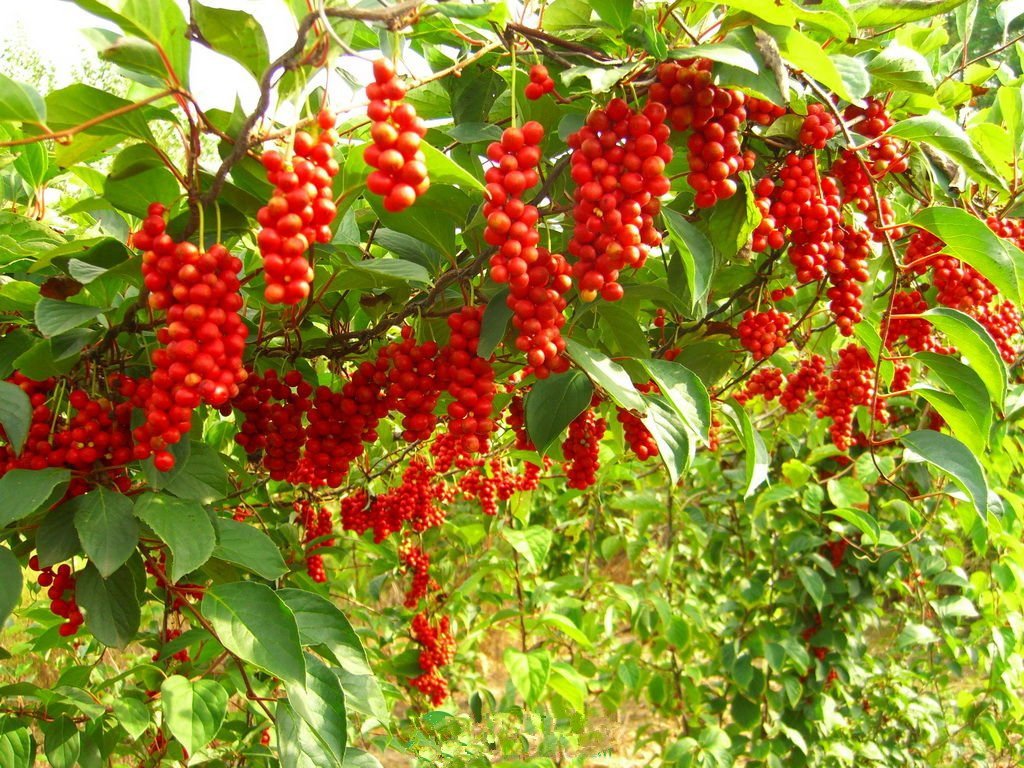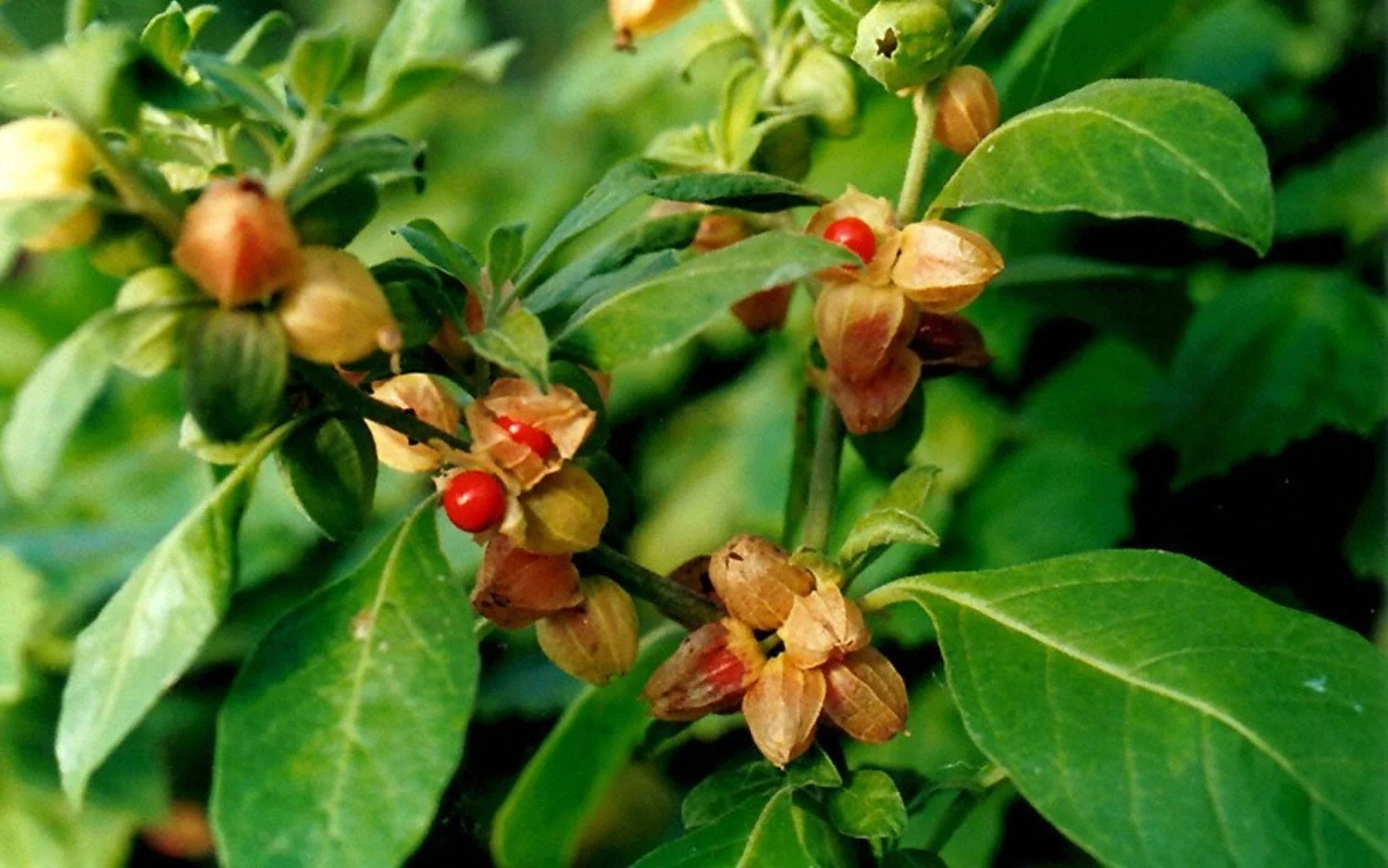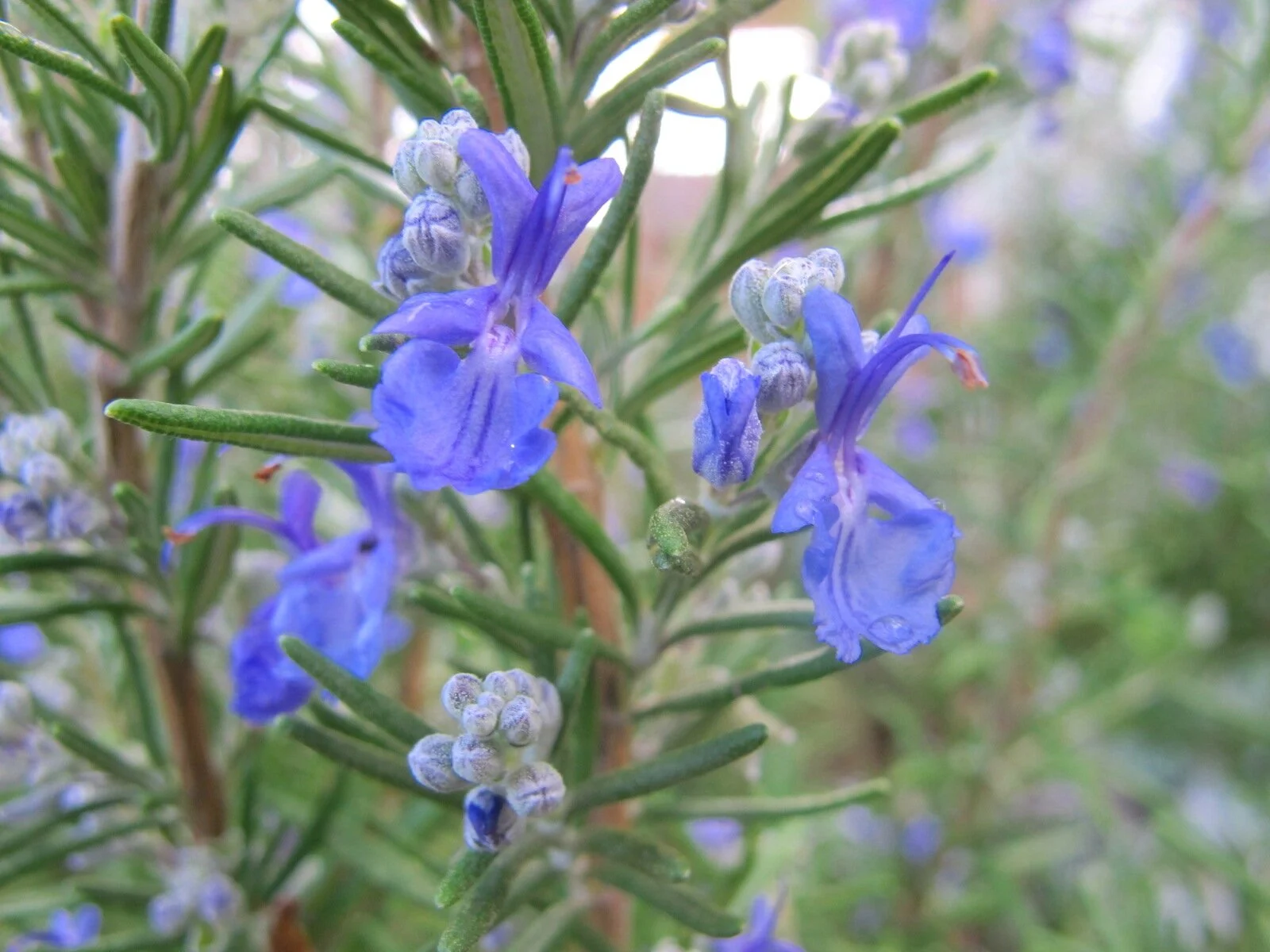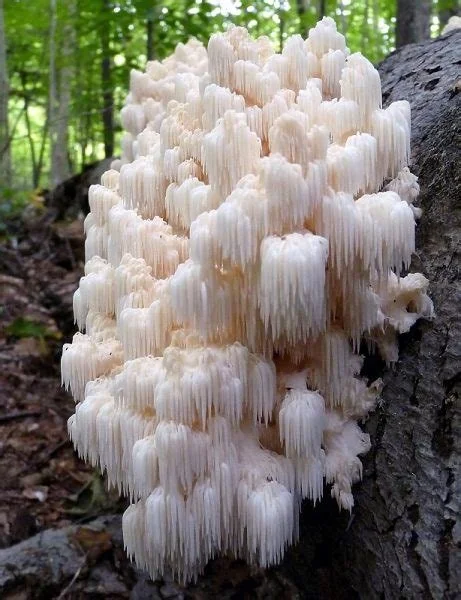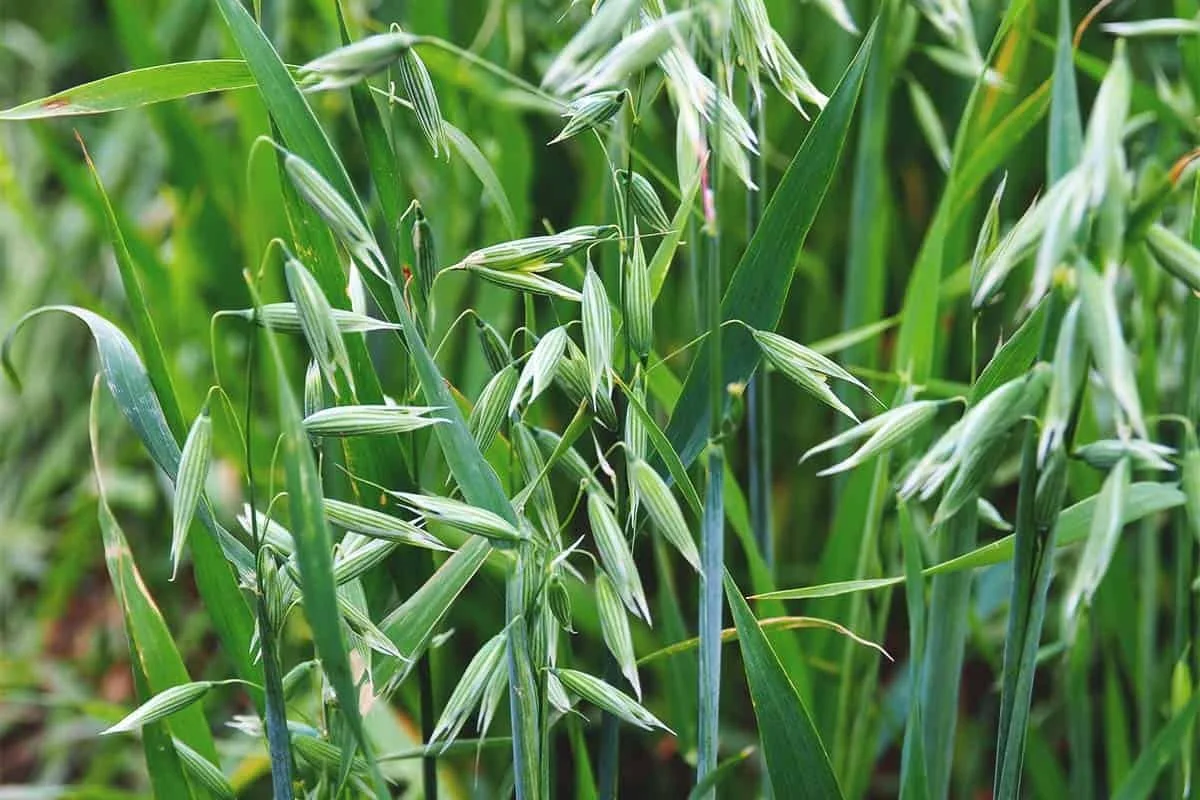Botanical Therapy
For the Nervous System
GOTU KOLA
Welcome to our deep dive into the nervous system, which for sure includes some of our most beloved plant allies! I have spent decades working with plants to support people’s stress, anxiety, depression, and mental health. I’ve learning a lot about the plants that help us acutely when needed day to day, as well as tonics that can transform our mental and emotional realms pretty powerfully. We covered this system very in depth in year one, so please use both modules to complete our look at the nervous system. For this second year, I’ll focus now on addressing specific illnesses of the nervous system more directly, and how to recommend herbs safely at the most effective doses.
Plants that support our nervous system are daily remedies. I build my herbalism practice on nourishing herbs and adaptogens as the base, and then nervous system support. I am often cycling through plants that support different organs of my body I can feel need tending to, but stress relief and calming nervines are a must every day. When I recommend herbs to others, nervines are a constant. We all need nervous system support… whether it’s with stress, depression, anxiety, sleep, mental focus, or to just support relaxation. Humans and many animals have always needed plants to support our nervous systems. We have always used alcohol, smoking, and many drug like plants… but they often come with a host of other difficult side effects. Nervines are a safe and effective alternative to bring us the ease we need daily. They can be especially helpful when we have a history of needing Western drugs or recreational drugs to calm ourselves through emotional or mental stress.
The human brain and nervous system is difficult to manage, and brings us an often more challenging life than other animals (in the wild). I think stress relief and emotional support is more than half of what’s needed every day in terms of healing therapies for humans. It takes effort and care to keep ourselves emotionally and mentally well in an unwell society. Our whole body and being needs ease and peace in a society constantly blasting our mind and nervous systems. It takes wisdom, discernment, and very strong boundaries to create peace and calm within. Plants are powerful healers for our mind and emotions. Tending to ourselves and receiving the support we need allows us to support the communities around us better. Through connection and intimacy with plants and nature, we’ve found deeply important medicine needed for the illnesses of human society.
An important thing to note as well… When people are going through physical or emotional illness, it is stressful. Illness in general can cause a lot of anxiety, depression, worry, and a range of emotions. It’s not easy to experience sickness that’s more than just a cold or flu. Chronic illness always comes with a level of stress that needs support. I also include mental and emotional suffering to be in the category of chronic illness, since dealing with emotional and mental suffering, as well as the effects of trauma (which is all to0 common) is similar to tending our physical body through a long term illness.
Sometimes we need these emotional support plants most during times of intense struggle, and when that period passes we need them less frequently. If someone is dealing with a period of immense struggle and stress they need a lot of tending to for that period of time, and then the need will naturally change once things shift. Most suffering is relieved in time, generally it is temporary and will not last forever. These plants can create real moments of relief when we need it, and our role for others can be offering the acute help someone needs.
Spend time considering what challenges of the mind and nerves you see most in your communities. What do you see people most needing? What would you like to support in those who surround you? I see a lot of overwhelm, over focus on work, busyness, stress, distraction, depression, insomnia, irritability, emotional swings, and high anxiety/panic. Our happiness level seems to continually be going down even with so many of our basic needs met. We all have to consider what really contributes to emotional wellness, and what is causing our suffering. Explore plants (and dosages!) that help to relieve anxiety, calm the mind, relax tension in our body, ease pain, and help us sleep deeper. Make friends with the adaptogens that can regulate our stress response and help rebuild the nervous system. Remember the power of our nourishing herbs like oatstraw and nettles to stabilize the nervous and endocrine systems, strengthen our adrenals, and regulate our energy levels.
OATSTRAW
I hope this module also helps you to feel more confident recommending plants to help relieve suffering and bring mental peace. I hope you get to know more of these amazing plants that support our well being. Choose a few more plants to explore! Use them in different preparations and get a strong sense of how each feels in your body. The plants in this module are needed by all of us, and daily in my opinion. Learn the plants in your own body. Explore how skullcap feels as a tea, tincture, and glycerite… Feel the taste of ashwagandha infused in honey, or blended with burdock in tea. Learn how to brew a good peony root tea that isn’t too strong, and play with doses of blue vervain tincture. Feel their effects at different doses, notice what the nervines feel like at stronger doses, or teas vs. tinctures. You have to learn each plant through different preparations, concentrations, and dosing. Experimentation is the path to learning with herbalism. Start with weaker doses and work your way up feeling the difference.
Many of our dream activating nervine plants open the 3rd eye, which allows us to experience more of our lives and the divine world around us in a deep way! Consciousness shifting plants bring us beyond our limited perceptions, opening us to the realms of nature and spirit… Many of the plants we talk about this module rewire the brain and nervous system to allow new experiences and awareness in. Visioning plants can bring us sight beyond just what our eyes can see! They increase our sensory experiences and create new neural pathways. Plants are awakened beings that can help us experience more of life and the universe… allowing us to vision and see what is possible.
Remember the plants are the ones doing the work, we are just helping bring them to more people. Reminding our communities of the medicine that literally surrounds us all. Plant medicine belonged to all of us once, and one day it will again. The plant elders are wise healers, and they will be available to call on to support your community for many years to come.
May these plants help your heart and mind awaken to peace,
In peace and ease,
Sage
Video ~ Botanical Therapy for the Nervous System
Audios and videos uploading shortly!
The Nervous System
The Brain, Neurotransmitters, and Nerves
We will now move on to discussing plants that support the health of our physical brain and nerves. There is a lot we can do to support the health of our nerve cells, reducing damage and stimulating repair. Science has also now shown us that every organ in our body produces neurotransmitters, which are communicating with our nervous system constantly. This just illustrates the truth that our whole body is communicating, and our nervous system (mind, nerves, and heart) are picking up information constantly.
For all of us there are always multiple factors to what we are feeling mentally and emotionally… layers of feeling, emotions, sensations, thoughts, and memories coming from all parts of our body and being. If we don’t rush, with curiosity and patience we can discover slowly what’s happening within and what might be needed for support. It’s important to focus on multiple therapies and practices that will strengthen and nurture someone’s mental and emotional health both on a physical level and beyond…
Aspects of Nervous System Health
9. Reducing causes of damage to nerve/brain cells (reduce exposure to toxins and introduce antioxidants like clove, cinnamon, turmeric, sage, basil, rosemary, fruits, blueberry, pomegranate, hibiscus, rose hips).
~
10. Stimulating repair of nerve tissue (nerve repair herbs like st. john’s wort, skullcap, oatstraw, mimosa, butterfly pea, gotu kola, and ginkgo).
~
11. Rebuilding nerve myelin sheath (silica rich plants like nettles, oatstraw, and horsetail).
~
12. Supporting brain repair (herbs like lion’s mane, ginkgo, schisandra, siberian ginseng, gotu kola, ashwagandha, bacopa, astragalus).
~
13. Circulation & oxygen to the brain (herbs like ginkgo, rosemary, gotu kola, and schisandra).
~
14. Repairing fatty tissue around nerves (omega fatty acids in fish oil, primrose oil, borage oil, olive oil, hemp oil, flax, and chia).
~
15. Repairing damaged DNA in nerve/brain cells (herbs like reishi, astragalus, and siberian ginseng).
~
16. Repairing musculoskeletal pain and injury effecting nerves tissue. Including tissue inflamnation or cramping. (turmeric, ginger, comfrey, arnica, st john’s wort, plantain, black birch, evergreens, as well as antispasmodics like kava, cramp bark, valerian, peony, magnolia.)
1. Nourishing nutrient deficiencies (herbs high in calcium, magnesium, B vitamins etc. like nettles, dandelion, and oatstraw).
~
2. Healthy gut bacteria (probiotics, fermented vegetables and inulin rich herbs like burdock root, dandelion root, elecampane etc.)
~
3. Support deeper sleep (sedatives like skullcap, mugwort, california poppy, blue vervain, passionflower, valerian).
~
4. Endocrine and hormonal balance (using adaptogens like ginseng, schisandra, and ashwagandha as well as other endocrine tonics like chickweed, nettles, oatstraw).
~
5. Sedating or calming nerves (all of our wonderful nervines like peach, blue vervain, california poppy, skullcap, oatstraw, linden, catnip, lemon balm, lemongrass, soursop/guanabana, motherwort, passionflower, kava, mugwort, rose etc.)
~
6. Lowering stress response through hypothalamus-pituitary-adrenal axis (using adaptogens).
~
7. Rebuild adrenals (adaptogens like ginseng, schisandra, nettles, burdock, ashwagandha, maca).
~
8. Balance of neurotransmitters (herbs like st. john’s wort, schisandra, ashwagandha, ginkgo, oatstraw, and siberian ginseng).
SAGE FLOWERS
This may feel like a lot to address, but as you can see many of the herbs overlap in these different categories. When I’m looking at support a specific system, this is how my mind organizes what I need to address. Some things may not be relevant in all situations, such as supporting deeper sleep if someone is sleeping really well already… or addressing nutrient deficiencies if they aren’t an issue, (which could be done through blood tests). If you can understand these basic elements of repairing the nervous system including the brain, you can apply them to a specific situation and person.
When I am recommending herbs I try to only give 2-3 remedies to take daily, with one of them being a water based infusion (tea or overnight infusion). It would not be hard to create a few blends that address most of these aspects of rebuilding the nervous system. I could create a tea infusion and a couple tincture blends or simples, introducing each one at a time before adding a new one.
My absolute favorite herbs to strengthen and support the nervous system are listed below. I try to include at last a few of them no matter what. As you can see they are all adaptogens except for oatstraw and skullcap, which I consider to be supreme nervous system restoratives. Other herbalists may add in a few others such as Bacopa, Ginkgo, Gotu kola, Codinopsis, Rhodiola, St. John’s Wort, Blue vervain, and Sage. There are certainly other amazing nervous system restoratives, these are just the ones I have seen to be the most effective over the years.
My favorite plants
to strengthen the nervous system ~
Oatstraw, Siberian Ginseng, Ashwagandha, Schisandra, Skullcap, Peach, Holy basil, Sage, Blue vervain, Ginkgo, Reishi, Evergreens
Audio ~ Caring for the Nervous System
SKULLCAP
Nourishing our Nerves
Addressing Nutrient Deficiencies with Vitamin Rich Plants
Vitamins and minerals play a crucial role in maintaining brain health and supporting the nervous system! For this reason our nourishing herbs are incredibly helpful for our brain and nervous system’s health. We can get our nutrients from multivitamins, from food, and from nourishing herbs. Our digestive system also needs to be functioning well for nutrients to be absorbed well. The right balance of nutrients is essential for neurotransmitter function in the brain, protecting neurons from damage, and allowing for communication between nerve cells. We can get our blood tested (and sometimes stool) to see what nutrients we might be lacking or not absorbing well. Below are key vitamins and minerals that contribute to brain and nervous system health, as well as the herbs we can use get them.
Nutrients for nervous system health ~
B Vitamins, Vitamin D, Magnesium, Calcium, Zinc, Iron, Copper, Selenium.
VITAMIN B1 (Thiamine) ~ Essential for converting carbohydrates into energy, which is critical for brain and nerve function. It also supports neurotransmitter synthesis, which helps regulate mood and cognition. Thiamine deficiency can lead to neurological problems, including memory loss and confusion. Sources: Nettles, Oatstraw, Dandelion, Chickweed. Whole grains, legumes, nuts, and seeds.
VITAMIN B6 (Pyridoxine) ~ Helps in the production of neurotransmitters like serotonin, dopamine, and gamma-aminobutyric acid (GABA), which are important for mood regulation and cognitive function. B6 also aids in reducing inflammation in the brain.
Sources: Nettles, Oatstraw, Dandelion, Chickweed. Poultry, fish, bananas, and potatoes.
VITAMIN B12 (Cobalamin) ~ Essential for maintaining myelin, the protective sheath around nerves that ensures efficient transmission of nerve impulses. It also plays a role in red blood cell formation, which delivers oxygen to the brain. A deficiency can lead to memory problems, mood disturbances, and neuropathy. Sources: Spirulina, Meat, dairy products, and fortified cereals.
FOLATE (Vitamin B9) ~ Involved in DNA synthesis and repair, which is essential for brain development and function. It also helps regulate homocysteine levels, a compound that, in excess, can lead to cognitive decline. Folate deficiency is associated with increased risk of depression and cognitive impairment.
Sources: Nettles, Oatstraw, Dandelion, Burdock, Chickweed. Leafy greens, legumes, and fortified grains.
VITAMIN D ~ Important for regulating mood and supporting overall brain health. Studies have shown that vitamin D deficiency is linked to cognitive decline and an increased risk of neurodegenerative diseases like Alzheimer’s. Sources: Nettles, Oatstraw, Dandelion, Chickweed. Sun exposure, fortified milk, and fatty fish like salmon.
VITAMIN E ~ A powerful antioxidant, vitamin E protects neurons from oxidative stress. It helps maintain the integrity of cell membranes and may slow cognitive decline associated with aging. Sources: Nettles, Oatstraw, Dandelion, Chickweed. Nuts, seeds, spinach, and broccoli.
MAGNESIUM ~ Involved in over 300 enzymatic reactions in the body, including nerve transmission and neuromuscular conduction. It also plays a role in the regulation of neurotransmitters like glutamate and GABA, helping to maintain healthy brain function and prevent conditions like anxiety and migraines. Sources: Nettles, Oatstraw, Dandelion, Burdock, Chickweed, Basil. Leafy greens, nuts, seeds, and whole grains.
ZINC ~ Crucial for synaptic plasticity, which is the ability of synapses to strengthen or weaken in response to activity, a process that underlies learning and memory. Zinc also plays a role in regulating neurotransmitter release and protecting against oxidative stress.
Sources: Nettles, Oatstraw, Dandelion, Alfalfa, Chickweed, Parsley, Ginger. Pumpkin seeds, sesame seeds, cashew, brazil nuts, hemp seeds, sunflower seeds, chia, flax, meat, shellfish, grains, beans (best soaked), nuts and seeds.
IRON ~ Necessary for oxygen transport to the brain and is involved in the synthesis of neurotransmitters like dopamine and serotonin. Low iron levels can lead to cognitive impairments, poor concentration, and mood changes.
Sources: Nettles, Oatstraw, Dandelion, Parsley, Chickweed, Thyme, Basil, Mint, Spirulina, Dill. Red meat, seeds and nuts like sesame seeds and hemp seeds, goji, beans, grains, seaweeds, leafy greens like spinach.
COPPER ~ Involved in the synthesis of neurotransmitters and the formation of myelin, which ensures the proper functioning of the nervous system. It also helps in the defense against oxidative damage in the brain.
Sources: Maca, Cacao, Shitake mushroom, Poppy seed, Turmeric, Basil, Mint, Cilantro, Black pepper, Fenugreek, Nutmeg, Fennel. Spirulina, sesame seeds, shellfish, nuts, seeds, and whole grains.
SELENIUM ~ Plays a vital role in reducing oxidative stress and inflammation in the brain. Adequate selenium levels are important for cognitive function and may help prevent neurodegenerative diseases. Selenium also plays an important role in reproduction and maintaining pregnancy, the function of the thyroid gland, production of DNA, and protecting the body from free radicals or infection Sources: Mustard seeds (highest), Ginger, Garlic, Onion, Parsley, Nettles. Brazil nuts, fish, oysters, eggs, and sunflower seeds.
DANDELION
NETTLES
CHICKWEED
SEAWEED
ALFALFA
Herbs to Nourish the Nerves
Nettle (Urtica dioica) ~
Contains significant amounts of vitamins B1 (thiamine), B2 (riboflavin), B6, B9 (folate), which are important for energy production, neurotransmitter synthesis, and nerve function. Stinging nettle also contains vitamins A, C, D, E, K, calcium, iron, magnesium, potassium, protein, beta-carotene, and chlorophyll.
~
Oatstraw (Avena sativa) ~
Rich in B vitamins, particularly thiamine (B1) and folate (B9), which help support cognitive function and mental clarity. Rich in Vitamin B, D, E, Magnesium, Calcium, and Iron. Oatstraw is also an amazing plant for reducing stress and anxiety.
~
Dandelion (Taraxacum officinalis) ~
Contains B vitamins, including B1 (thiamine), B6, and folate (B9). Also a rich source of vitamins A, C, D, iron, potassium, and zinc.
~
Chickweed (Stellaria media) ~
Stellaria species are rich in nutrients, including B vitamins (such as thiamine, riboflavin and niacin), magnesium, iron, calcium, zinc, vitamins C, A, and protein.
~
Burdock (Arctium lappa) ~
Contains B vitamins including folate (B9), magnesium, calcium, phosphorus, selenium, and potassium. It’s also high in vitamin C, choline, vitamin E, and K.
~
Alfalfa (Medicago sativa) ~
Rich source of B vitamins, calcium, iron, zinc, potassium, A, C, E, and K4. Alfalfa contains high levels of zinc, which is important for brain development and function, mood regulation, and neurotransmitter regulation.
Plantain (Plantago major) ~
High in vitamin A and C, calcium, magnesium, potassium, zinc, protien, and manganese.
Seaweeds ~
Rich in iron, magnesium, vitamin A, C, E, vitamin B9, iodine, vitamin K, fiber, DHA and EPA (omega fatty acids, potassium.
Red Raspberry ~
Excellent source of vitamin C, all B vitamins, iron, zinc, potassium, magnesium, and phosphorus.
~
Basil and Lemon balm ~
Both high in Magnesium, which is crucial for nerve function, relaxation, and mood regulation. Magnesium helps reduce stress, reduce tension, relieve anxiety, and supports sleep.
OATSTRAW
BURDOCK
Video ~ Nutrient Rich Plants for the Nervous System
ASHWAGANDHA
Regulating
The Autonomic Nervous System
Balancing Endocrine System Hormones
using adaptogens like ginseng, schisandra, and ashwagandha
as well as other endocrine tonics like chickweed, nettles, oatstraw
Our nervous system needs help regulating when we are under high levels of stress, anxiety, fear, or shock. As we covered in the first year, the involuntary (autonomic) nervous system is the primary mechanism in control of the fight-or-flight stress response. This means that we can’t control it, we can only impact it through different practices such as breathing and relaxation techniques, and of course herbs.
Our autonomic nervous system (ANS) controls our involuntary bodily functions, and stress response. It is regulated by the hypothalamus in the brain and your adrenal glands. The ANS transmits impulses from our brain and spinal cord to smooth organ muscles, cardiac muscle, and our endocrine glands. This includes regulating functions such as heart rate, digestion, respiration, and blood pressure.
The autonomic nervous system provides almost every organ with a double set of nerves - the sympathetic and parasympathetic. They work in tandem to each other to give us the state of relaxation and rest (parasympathetic) and excitement or action (sympathetic). Often one system activates a physiological response and the other inhibits it. The autonomic nervous system is responding continually to internal and external stimuli, which includes responding to our environment constantly. Adaptogens and calming herbs can be used to support stress management, promote relaxation, and maintain a healthy balance between the two systems, helping the body adapt to both stress and relaxation.
The parasympathetic nervous system (PNS) is the set of nerves that cause relaxation, which is responsible for the "rest and digest" functions of the body. It conserves energy instead of burning energy, and stimulates the body to focus on healing. The PNS helps the body relax after stress, lowers blood pressure and heart rate, as well as regulates normal body functions during periods of calm. The left and right vagal nerves contain 75% of your parasympathetic nervous system’s nerve fibers, which means your vagal nerves are responsible for most of your body’s relaxation. These fibers send information between your brain, heart, and digestive system, helping us to go into the “rest and digest” state.
Relaxants
Inviting Peace & Relaxation
PASSIONFLOWER
Herbs that activate the parasympathetic nervous system are nervines and calming adaptogens. They can also help us to slowly release from the frozen state, calming any panic residing underneath. We have covered the nervines extensively, but I want to talk about dosing that will be the best during intense moments of stress. I recommend taking 3-4 droppers full in water every couple hours until relief is eventually felt.
Ashwagandha (Withania somnifera) is one of my favorite adaptogens and nervines, amazing for reducing stress and plants for anxiety, increasing parasympathetic activity by helping the body relax and recover from stress. The root tastes sweet and earthy, and is safe to take daily. It is very balancing to hormones, anti-inflammatory, antidepressent, and helpful for deeper sleep. In times of high stress it will lower cortisol levels and calm an overactive stress response. Ashwagandha is also known to help with building healthy muscles and increasing energy or endurance. I love the grounding and stabilizing feel of ashwagandha. 2-3 droppers full of tincture in a glass of water 2x a day.
Skullcap (Scutellaria lateriflora) is one of the absolute best nervines for longer term constant use. It’s in the mint family and can be taken daily (often many times a day) to reduce anxiety or overwhelm. It’s especially helpful someone’s stress is connected to overworking, addictions, trauma, or chronic stress. It can help improve sleep, relax the muscles in the body, and quiet the mind. I love the taste and feel of skullcap because it is so opening to the lungs and helpful for releasing all kinds of emotional tension. 2-4 droppers full of tincture in a glass of water 2-3x a day.
Lemon Balm (Melissa officinalis) helps reduce anxiety and increases relaxation by enhancing parasympathetic nervous system activity. It’s especially nice to drink as a tea, soothing to digestion, uplifting when we have the blues, and helpful for sleep. Lemon balm is gentle and relaxing to tension we hold in our body and bellies. Wonderful for kids, especially as a tea or sweet glycerite. Drink the tea or take 2-4 droppers full of tincture in a glass of water 2-3x a day.
Peach (Prunus persica) is fast becoming my favorite nervous system relaxant. It’s related to rose, hawthorn, and cherry, with a sweet cooling energy. I love that it’s a heart tonic, anti-inflammatory for the whole body including the musculoskeletal system, pain relieving, antidepressant, and deeply relaxing to anxiety. 2-3 droppers full of tincture in a glass of water 2-3x a day.
Linden (Tilia cordata) is sweet and soothing to the nerves, enhancing the parasympathetic response and helping us to feel safe. This is the tea I often give students when they first come to class. It’s sweet tasting, demulcent, and a wonderful nerve tonic to release anxiety or fears. I find the smell of the flowers intoxicating and love these trees deeply. Linden is also a great heart tonic as well as soothing to the digestive system. I prefer linden as a tea or sweet in a glycerite. 2-4 droppers full of tincture in a glass of water 2-3x a day.
Blue vervain (Verbena hastata) has long been one of my absolute favorite relaxant nervines. It’s quite bitter but you don’t notice much when you add the tincture or glycerite to water. It’s a muscle relaxant, hormone balancing, pain relieving, antidepressant, and incredible for anxiety. As a tea it’s a little to bitter for most people! 2-3 droppers full of tincture in a glass of water 2-3x a day.
Stimulants
Excitement & Activity
RHODIOLA
The sympathetic nervous system helps us to have energy and wake up when we need to! This system is responsible for enabling quick responses to stress or danger and increases energy during times of excitement or perceived threat. It promotes activity and action in the body, as well as the "fight or flight" response. This is caused by a release of adrenaline and other stress hormones such as cortisol from the adrenals, signaled by the hypothalamus in the brain.
The sympathetic nervous system is part of our involuntary nervous responses that prepare the body for action, causing alertness and arousal. It also burns energy and over time can make us feel depleted and tired. The sympathetic nervous system increases the release of sugar from the liver into the blood so we have higher blood sugar for our cells to have the fuel they need for activity. During the stress response blood flow diverts away from the gastro-intestinal tract and skin. Blood flow is increased to the skeletal muscles, lungs, heart, and brain (by as much as 1200% in the case of our skeletal muscles). This allows us in theory to run from the bear during the stress of a possible threat or attack.
The bronchioles (air vessels) in our lungs also dilate from the circulating epinephrine, which increases the oxygen our body can receive for the energy we need. It provides vasodilation for the coronary vessels of the heart, allowing more blood flow to the heart and increases our heart rate. Our pupils dilate, which allows more light to enter the eye and provides further reaching vision. Our digestive system slows down by constricting all the intestinal sphincters and the urinary sphincter. Since we have extra blood flowing to the brain, we often feel more alert and focused. We feel energized because our cells are receiving more fuel, and adrenaline is pumping through our bloodstream from the adrenals. This active state allows us to be able to do all of the activities we love, as well as work hard when we want to! Most of us drink coffee and tea or some other stimulates to activate the sympathetic nervous system. Over time this is certainly exhausting to our system without enough rest.
When we stay in the sympathetic state for too long of a period, it exhausts our endocrine and nervous systems. The resulting symptoms are varied and many… chronic stress, fatigue, anxiety, weight gain (from too much cortisol in the blood stream), frazzled nerves, physical weakness, exhaustion, unclear thinking, insomnia, high blood pressure, damage to the heart and blood vessels, depleted adrenals, eventual low cortisol and often depression. Without enough cortisol, which is a natural anti-inflammatory, we have have chronic inflammation and an immune system that can be overactive leading to allergies or autoimmune issues.
Herbs that stimulate and activate the sympathetic nervous system ~
TEA
Ginseng (Panax ginseng) ~ Ginseng is an adaptogen that stimulates the sympathetic nervous system, and for some people can cause feelings of being too gittery if it is taken at too high a dose. Ginseng increases energy, improves focus, and enhances physical endurance during times of stress or fatigue. It is also hormone balancing, immune strengthening, and a helpful anti-depressant.
Rhodiola (Rhodiola rosea) ~ Rhodiola can be activating and energizing while still helping to balance the body's stress response and prevent excessive over activation. Rhodiola boosts energy and increases mental alertness, while also helping to calm when stress levels are high. Similar to ginseng we do not want too high of a dose or we can feel overstimulated. Rhodiola is also a heart tonic, which can feel especially soothing and sweet. I find it to taste like an earthy rose tea and it’s really helpful when we need an adaptogen that has really lovey energy.
Coffee & Black or Green Tea ~ Coffee and tea are of course the most preferred stimulants around the world, which are both activating to the sympathetic nervous systems and help us have both focus and energy. Both are strongly antioxidant, and coffee is a useful bitter for the digestive system. However we do want to be careful to not over stimulate the adrenals with excessive coffee drinking. Green tea is much lower in caffeine and highly antioxidant, causing it to be a wonderful tonic for the brain and heart.
Video ~ Plants to Energize & Stimulate
Feeling Frozen, Numb, and Disconnected
The Freeze State
We all have moments of feeling shut down, numb, and frozen. It tends to happen when there is mental and emotional overwhelm during a very stressful period of time or after traumatic experiences. When the sympathetic nervous system is in high ‘fight or flight’ activity/stress response, often the parasympathetic steps in to “cap” it and control it. As we talked about in the first year module, this results in a “frozen” state that often has feelings of disassociation and high levels of fight or flight hidden underneath. As this frozen state releases, the fight or flight stress response is experienced.
Many of us know the freeze state as a strange feeling of calm we may experience during emergency or high stress situations. Underneath the outer calm is buried a deeper layer of emotions, anxiety, and fear that will eventually have to release. As we slowly come out of a frozen state we have to be careful of the emotions, anger (fighting), or desire to run that could release underneath. You can take daily, and sometimes hourly, nervine herbs to bring down the stress residing underneath of a frozen state. Often it takes a certain level of safety for the panicked frozen state to release, but we have to be careful we don’t harm those around us when the pain releases underneath. Safe spaces to cry, scream, yell, shake, and move our bodies can help us release the emotions we need to let out of our bodies.
NETTLE SEED
Regulating Cortisol
& Building Adrenals
Reducing Stress Response & Stress Hormones
with adaptogens like ginseng, schisandra, nettles, rhodiola, holy basil, licorice, eleuthero, ashwagandha, reishi, maca
We all know the importance of our adrenals to give us energy. They are the endocrine organs responsible for helping us wake in the morning and being active during the day! We love coffee and black tea not just for the taste, but to give us energy throughout the day to do things we want to do. The adrenals also help regulate different body functions when we are active and expending energy, as well as during moments of stress or excitement. The adrenals produce very important hormones such as cortisol, aldosterone, and androgens like testosterone. We will look at cortisol first, and then the other hormones we receive from our adrenals and the effects they have.
Cortisol is often called the “stress hormone” because it helps the body respond to activity and stress by increasing blood sugar to give your body fuel for energy. Cortisol helps in regulating metabolism by influencing how the body processes carbohydrates, proteins, and fats so the body has energy when its needed. Cortisol also has potent anti-inflammatory properties, helping to control the body’s immune responses. Cortisol suppresses inflammation in the body, and represses the immune system from overreacting.
Cortisol is a natural anti-inflammatory that prevents chronic inflammation, allergic reactions, and auto-immune diseases. When there is too little cortisol this can result in an overactive immune system. This means there is adrenal insufficiency and we have to build up the health of the adrenals to get cortisol levels back up to normal.
Low Cortisol
and Cortisol Resistence
There are two reasons we may not have the cortisol we need - 1. when the adrenals are not producing enough because we have adrenal depletion. 2. When high levels of cortisol from chronic stress causes the body to become resistant to cortisol’s effects, similar to how the body can become resistant to insulin in diabetes. This can result in an overreactive immune system causing increased allergic reactions, auto-immune illnesses, and chronic inflammation.
Certain herbs particularly adaptogens, help the body cope with stress and can improve cortisol sensitivity such as astragalus, rhodiola, ginseng, reishi, ashwagandha, holy basil, maca, nettles, and burdock. Chronic inflammation contributes to cortisol resistance, so reducing inflammation in the body can help restore cortisol sensitivity. Increasing water intake, omega-3-rich foods (like fish) can reduce inflammation, as well as anti-inflammatory herbs such as turmeric, ginger, burdock, licorice, marshmallow root, cat’s claw, japanese knotwood, evergreens, salicylic acid contianing herbs like willow, birch, cottonwood, or magnolia.
REISHI
Reducing High Cortisol
When there is too much cortisol as a result of chronic stress, it effects the body in many ways. Besides leading to cortisol resistance, high cortisol can cause fatigue, high blood pressure, headaches, irritability, difficulty concentrating, mood swings, anxiety, and depression due to the hormone's impact on the brain. It can also cause weight gain, acne, thinning skin and hair, easy bruising, flushed face, slowed healing of wounds, osteoporosis, and muscle weakness. Prolonged elevated cortisol can suppress the immune system making someone more susceptible to infections, as well as causing insulin resistance, which can lead to type 2 diabetes.
There are many ways to reduce high cortisol levels. Since fluctuations in blood sugar levels can trigger cortisol spikes, eating regular meals with a good balance of protein, healthy fats, and fiber helps stabilize blood sugar and reduce the need for cortisol to intervene in blood sugar regulation.
Not getting enough sleep can also lead to elevated cortisol levels and worsen cortisol resistance. Improving sleep quality is crucial for restoring the body's normal cortisol rhythms. Regular moderate exercise can also lower cortisol levels and improve the body's sensitivity to cortisol, but it’s important to avoid over-exercising, as intense or prolonged exercise can increase cortisol production. Chronic stress and overwork can contribute to high cortisol levels, which can cause cortisol sensitivity so it’s important to make time for relaxation and self-care. Engaging in activities that bring joy and relaxation, such as spending time in nature, socializing with loved ones, or pursuing hobbies.
Adaptogens such as Ashwagandha, Rhodiola Rosea, Holy Basil, Panax Ginseng, Licorice Root, Schisandra, Reishi, Maca Root, and Eleuthero are effective natural remedies for reducing cortisol resistance. By regulating cortisol production, supporting adrenal health, and improving the body’s stress response, these herbs help restore balance in the HPA axis and reduce the risk of long-term cortisol-related health issues.
Cortisol & Allergies
High stress levels often cause an increase of allergies and allergic reactions. Chronic stress and high cortisol can also lead to imbalances in immune function, causing certain immune cells, like mast cells, to become more reactive. Mast cells are responsible for releasing histamine when they detect an allergen, and if they become overactive, even minor exposures to allergens can trigger stronger allergic responses. This means high stress can cause more hay fever, asthma, or skin conditions such as eczema.
High cortisol levels can also weaken the protective barriers of the skin, gut, and respiratory tract, which normally help prevent allergens and pathogens from entering the body. When these barriers are compromised, the immune system may encounter more allergens, increasing the frequency and severity of allergic reactions.
Herbs for Adrenal Health
ADRENAL GLANDS & KIDNEYS
Nettles (Urtica dioica) ~ Nettle seed is an adrenal tonic and as an adaptogen are able to modulate our stress response. A tincture of the seeds are good for helping with adrenal burnout and rebuilding after (or during) chronic stress. This can increase the production of adrenalin and cortisol as the adrenals slowly return to proper functioning. Nettle seeds can help with fatigue and boost energy levels over time, increase st mental clarity, and stamina, making them particularly helpful in cases of adrenal fatigue where the body’s energy reserves are depleted. Studies showed that nettle seed can regulate the body's stress response by balancing the production of cortisol and other adrenal hormones. Nettle seeds are also rich in nutrients such as magnesium, zinc, iron, calcium, and essential fatty acids, all of which are crucial for adrenal health. The seeds are also a powerful kidney tonic, which helps improve adrenal function as well. Dose ~ 15 -30 drops to start in water. Can go up to 2 droppers full in water 3x a day. Nettles seed will be overstimulating for some people.
~
Ashwagandha (Withania somnifera) is an amazing adaptogen to strengthen the adrenals and nervous system. It is a great nervine to calm stress and anxiety, improve sleep, regulate neurotransmitters, and ease depression. The root and leaves can balance cortisol levels and support adrenal recovery during chronic stress or burnout. Ashwagandha as all of our adaptogens, helps regulate stress through modulating the hypothalamic-pituitary-adrenal (HPA) axis, the body’s central stress response system. By enhancing the body's ability to cope with physical and emotional stress, it can help restore cortisol sensitivity and alleviate the symptoms of cortisol resistance. I am in love with the calming, earthy, strengthening feeling of ashwagandha.
Dose ~ 2-4 droppers full of the tincture in water two or three times a day. For the tea brew 1-2 tsp of the root powder in 1 quart hot water steeped 30 minutes.
Rhodiola (Rhodiola rosea) ~ Rhodiola is a sedum that has a rose smelling root growing in cold mountain elevations in Europe, Asia, and North America. The tea tastes a bit like rose and dirt combined, both grounding and sweet. It is an adaptogen that has been used for thousands of years, enhancing mental or physical stamina and endurance, as well as recovering from burnout and exhaustion. Rhodiola helps the body adapt to stress, reduces fatigue, and strengthens the adrenals. It is particularly helpful for people dealing with exhaustion from prolonged stress. Rhodiola balances the stress response, lowers stress hormones, reduces cortisol resistance, and regulates neurotransmitters. It can be a great anti-depressant, increase mental focus, and enhance dopamine and serotonin activity. Dose ~ 1-3 droppers full of the tincture in water two or three times a day. For the tea steep 1-2 tsp of the root in 1 quart of hot water for 30 minutes.
TULSI
Holy Basil (Ocimum sanctum) ~ Tulsi is another amazing adaptogen we’ve explored already, but this one is a fragrant and heavenly minty basil used in Asia for thousands of years. It helps reduce stress and anxiety, strengthen the adrenal glands, balance cortisol levels, and reduce cortisol resistance. It’s also a tonic for the brain, increases mental clarity and regulates neurotransmitters. Tulsi helps regulate the body's response to chronic stress, lowers anxiety, and reduces inflammation and oxidative stress. Dose ~ 2-4 droppers full of the tincture in water two or three times a day. For the tea brew 2-3 tsp added to 1 quart hot water and steeped 30 minutes.
~
Schisandra chinensis is one of our most beloved adaptogens, with sour berries that give us energy like no other plant I know without caffeine. This adaptogen regulates the body’s stress response, reduces cortisol resistance, and strengthens the adrenal glands. Schisandra helps restore balance to the HPA axis, improves tolerance to stress, and regulates cortisol levels. Schisandra is also a brain tonic, neuroprotective, anti-inflammatory, fluid cleansing, kidney and liver strengthening, as well as hormone balancing. We love it’s energizing feel and sour zing! Dose ~ 2-4 droppers full of the tincture in water two or three times a day. For the tea simmer 3 tsp berries to 1 quart hot water for 20 minutes.
Eleuthero (Eleutherococcus senticosus) ~ (often referred to as Siberian Ginseng) ~ My three favorite adaptogens for the nervous system are ashwagandha, schisandra, and eleuthero. Siberian ginseng is a grounding, earthy, and calming adaptogen known for helping us have sustained energy, improved brain function, and reduced fatigue. Like the other adaptogens it lowers our stress response and helps balance cortisol production. Eleuthero strengthens the adrenals, helps the body recover after stressful events, and restores hormonal balance. It can increase energy levels and mental focus without overstimulating the body. Eleuthero is especially good for anyone with chronic fatigue and physical exhaustion. Athletes have used it for hundreds of years for endurance and mental focus in Russia, Siberia, and parts of Asia.
PANAX GINSENG
Panax ginseng is a well-known adaptogen that supports overall energy and mental clarity, while also helping the body balance cortisol levels. Ginseng enhances the body's stress response and reduces the release of excessive cortisol during stressful situations. It has been found to lower chronic stress-induced cortisol levels and improve the body's sensitivity to cortisol, helping those with cortisol resistance regain proper hormonal balance. In addition to improving physical resilience, Ginseng supports cognitive function and mental stamina, helping individuals feel more balanced and focused even during stress.
Licorice Root (Glycyrrhiza glabra) ~ Licorice root is an adaptogen especially helpful for adrenal burnout, low cortisol levels, or cortisol resistance, because it slows the break down of cortisol in the body. It is also strengthening to the adrenals, increases energy levels, and boosts the immune system (as all adaptogens do). Licorice also reduces inflammation throughout the body, especially in the respiratory and digestive tracts. It should be used with caution in people with high blood pressure since it has been known to increase BP especially in people who have edema.
Maca Root (Lepidium meyenii) is a sweet tasting adaptogen that’s also cooked and eaten as a food in the Andes. The bulbous root that looks like a beet has been traditionally used to balance hormones, increase energy and endurance. Like the other adaptogens, Maca helps regulate the body’s response to stress, increases resilience after stress, strengthens the adrenal glands, and balances cortisol levels. Maca feels very nourishing, grounding, and demulcent, wonderful made into a tea and added to smoothies or cereals. It can reduce fatigue and give long lasting energy.
Herbs for the kidneys (also supporting adrenals) ~
Dandelion, Burdock, Nettles, Astragalus, Parsley, Milk thistle, Licorice,
Turmeric, Goldenrod,Cranberries,
Video ~ Plants for Adrenal Health
& Cortisol Regulation
ST JOHNS WORT
Balance of Neurotransmitters
with herbs like st. john’s wort, schisandra, ashwagandha, ginkgo, oatstraw, and siberian ginseng
Many issues of brain function and nervous system health are connected to imbalances in neurotransmitters, which are the chemicals our nerves use to send messages throughout the brain and body. All of us have an understanding of neurotransmitters affecting our mood and brain function to some degree. It’s important to recognize that emotions and experiences we have can alter these chemicals in our brain. When we have a lot of stressful or emotional experiences especially as a child, our brain and neural chemistry is impacted. There is a lot we can do to help someone return to a healthy chemical balance, understanding that there is not one normal… just many variations of the human brain and experience.
Neurotransmitters like serotonin, dopamine, GABA, and acetylcholine in our brain and nervous system regulate a lot of our body’s processes including mood, sleep, memory, stress, and motor functions. Balancing and supporting healthy neurotransmitter levels is important for not only mental health but physical health as well. Plants can effect neurotransmitters in many different ways, which we will explore in depth. I hope this thorough investigation of how plants effect our brain chemistry can help you understand more of how we can use them to help support others mental and emotional health. Be careful with combining herbs and Western medications that also effect neurotransmitters, since there can be interactions. I recommend using WebMD to look up herb-drug interactions when needed!
In the diagram to the right you can see neurotransmitters jumping from one nerve cell to the next. One nerve cell releases a chemical neurotransmitter and passes it the next nerve cell. The neurotransmitter binds to a receptor on the surface of the receiving cell, sending its chemical message. There are over 100 different neurotransmitters identified, though there are possibly 100-200 more unknown. Each neuron produces and releases only one or a few types of neurotransmitters, but can carry receptors on its surface for several. There are a few problems that can cause poor neurotransmitter transmition between nerve cells. Reuptake is when neurotransmitters are reabsorbed into the nerve cell instead of being sent to the next cell. Enzymatic degradation is when enzymes break down the neurotransmitters before the next nerve cell receives them, and diffusion is when neurotransmitters migrate away from the receiving nerve cell.
When certain neurotransmitters are either deficient or in excess we can see significant disruptions in brain function as well as the development of illnesses. For example low levels of serotonin can cause depression. Dopamine imbalances can cause schizophrenia, Parkinson’s disease, and contribute to ADHD. Anxiety disorders have been found to be connected to GABA (gamma-aminobutyric acid) dysfunction. GABA is a neurotransmitter that calms brain activity, and when GABA levels are low people can have heightened anxiety such as panic attacks.
Many people with ADHD and PTSD also experience norepinephrine imbalances. Inattention, restlessness, and hyperactivity disorder (ADHD) are symptoms of abnormal norepinephrine levels. Anxiety, tension, and post-traumatic stress disorder are all associated with abnormal norepinephrine levels. Memory and learning are influenced by the neurotransmitters glutamate and acetylcholine. The neurotransmitters melatonin and gamma-aminobutyric acid (GABA) have a role in the regulation of sleep cycles. Depression, anxiety, insomnia, schizophrenia, and Parkinson's disease are just some of the physiological processes that may go haywire when neurotransmitters aren't working as they should. The two most well-known classes of neurotransmitters are inhibitory and excitatory. Excitatory neurotransmitters encourage neurons to fire more often, whereas inhibitory neurotransmitters decrease neuronal activity.
Bipolar disorder is associated with changes in mood and is believed to be influenced by imbalances in neurotransmitters such as serotonin, dopamine, and norepinephrine. Low levels of the neurotransmitters dopamine and norepinephrine contribute to lethargy, depression, and lack of drive during the depressed phase, whereas high levels of these neurotransmitters can cause increased energy, impulsivity, and euphoria during the manic phase. Moreover, serotonin and dopamine pathway dysregulation is linked to OCD, which in turn contributes to the repetitive pattern of intrusive thoughts and actions. Acetylcholine is especially impacted in neurodegenerative disorders such as Alzheimer's disease, which also involve failure of other neurotransmitters. One reason why people with Alzheimer's experience memory loss and cognitive impairment is because of the degeneration of neurons that produce acetylcholine.
VALERIAN ROOT HARVEST AT GAIA
Many herbs we’ll discuss have been shown in studies to modulate neurotransmitter levels, balancing brain chemistry naturally. I’m including herbs that have been shown in studies to effect specific neurotransmitters, either by enhancing their production, regulating neurotransmitter receptors, or inhibiting the enzymes that break neurotransmitters down. I find these plants to be very effective for all kinds of brain and nervous system support through experiencing them over the last few decades in action… But it’s great to see the science back up what we see works! Please note these herbs should be used consistently and over a period of at least 1-3 months to see the best results.
There are many herbs recognized to help to maintain neurotransmitter balance. St. John's Wort increases serotonin, dopamine, and norepinephrine levels in the brain, which improves mood and reduces depression. Rhodiola balances serotonin, dopamine, and norepinephrine, increasing brain function and our stress tolerance. Ginkgo biloba affects acetylcholine and dopamine, neurotransmitters effecting brain funtion, memory, attention, and learning. It’s been used for thousands of years to address cognitive decline and neurodegenerative diseases including Alzheimer's disease. Passionflower, ashwagandha, lemon balm, valerian, and skullcap raise GABA levels in the brain, the main inhibitory neurotransmitter helping to lower brain excitability and encourage relaxation, so they are all used for anxiety and sleeplessness. These are just some of the examples of herbs effecting our neurotransmitters.
Video ~ Plants to Balance Neurotransmitters
Holistic Ways to
Balance Neurotransmitters
Neurotransmitters are made, released, and work in different ways depending on many factors, such as genes and the environment. Some nutrients, which we talked about in the first part of this module, are needed for the brain to make neurotransmitters. Lack of amino acids, vitamins, and minerals like magnesium, zinc, and B vitamins can make neurotransmitter levels get out of whack. Serotonin is made from the amino acid tryptophan, which is found in turkey, nuts, seeds, and bananas. Dopamine and norepinephrine start out as tyrosine, which is found in chicken, soy, and dairy products. For GABA and serotonin to be made, vitamin B6 is needed. Neurotransmitter imbalances that happen when we eat a lot of processed foods and not enough of the nutrients our bodies need can make us depressed and slow down our brains. Salmon and other seafood are high in Omega-3 fatty acids, which are good for nerves and neurotransmitters and help the brain work better.
What Affects Neurotransmitter Levels?
Herbs aren't the only way to help balance neurotransmitters. Dopamine, serotonin, and endorphins are chemicals that are released when you exercise. These chemicals make you feel better, lower your stress, and make your brain work better. It has been shown that regular exercise can help people who are depressed and anxious. Mindfulness meditation and other practices can also raise serotonin and GABA levels while lowering cortisol, which is the body's main stress hormone.
Stress that lasts for a long time throws off the balance of neurotransmitters, especially norepinephrine, serotonin, and dopamine. Too much stress can cause the body to make more cortisol, which can mess up the way neurotransmitters work. Low levels of serotonin and dopamine are caused by long-term stress, which leads to feelings of anxiety, sadness, and burnout. Neurotransmitter levels change in people who are under a lot of stress, which can lead to mood swings and problems with how their brain works.
Nicotine, alcohol, and some prescription drugs can have a big effect on the activity and levels of neurotransmitters. Long-term alcohol use can lower serotonin and dopamine levels, which can make depression worse. However, alcohol does increase GABA activity, which makes you feel calm. Western medicines used to treat anxiety and depression can lower the production of neurotransmitters in the brain over time, which can lead to dependence. Special drugs called selective serotonin reuptake inhibitors (SSRIs) raise serotonin levels by stopping serotonin from being reabsorbed in the brain. This makes people less depressed. When you use drugs for a long time, they can change the way your brain naturally makes neurotransmitters. This can lead to dependence and memory loss.
Endorphins, serotonin, and dopamine are chemicals that make you feel good, calm down, and help your brain work better. Being active makes these chemicals come out more. Regular exercise has been shown to help people with depression and anxiety feel better by making more neurotransmitters that are good for mental health available.
Brain chemicals like serotonin, dopamine, and norepinephrine need to be balanced, and sleep is a big part of that. Lack of sleep lowers the production of serotonin and dopamine, which makes mood swings and memory loss more likely. Not getting enough sleep can greatly alter the amounts of neurotransmitters in the brain, which can cause anxiety, depression, and problems with how the brain works.
Pollutants in the environment, like pesticides, heavy metals, and air pollution, can have a big effect on the health of your brain and the way your neurotransmitters work. Too much lead or mercury in the body can damage neurons and throw off the balance of glutamate and GABA neurotransmitters. Long-term exposure to environmental pollutants is often linked to changes in neurotransmitter activity, neurodegenerative diseases, and memory loss.
Genetics also have a big effect on how neurotransmitters work. Single nucleotide polymorphisms, or SNPs, are changes in genes that can affect how neurotransmitters are made, released, and broken down. Changes in the COMT gene can affect how dopamine is broken down in the brain. This can have an effect on mood, thinking, and the risk of mental health disorders. Genes that make serotonin or dopamine levels drop are linked to higher rates of anxiety and depression.
Neurotransmitter
Imbalances
Here is a short summary of some herbal approaches to different neurotransmitter imbalances. I go into further detail as we discuss each neurotransmitter and herbs we can use to support their healthy balance in the brain. Please remember that we have to address the causes of the neurotransmitter imbalance if possible, and use holistic therapies besides herbs… such as diet, sleep, exercise, stress reduction and relaxation practices. Understand that herbs will interact with Western medications, so always check on Web MD any drug interactions, and make sure someone is also working with a doctor to have medical supervision when using herbs and meds together.
Depression
Depression is often linked to low levels of serotonin, dopamine, and norepinephrine. Antidepressants such as SSRIs are used to increase serotonin levels, but there are many holistic alternatives such as herbs, exercise, and a healthy diet to support neurotransmitter balance. All herbs that increase serotonin, dopamine, norepinephrine, and GABA (lowering anxiety and stress) can reduce depression. As you read through this module you’ll see all of the herbs we discuss can be effective treatments for depression caused by different neurotransmitter imbalances. I’ll discuss depression more in depth in part 3.
Herbal therapies ~ St. John’s Wort, Rhodiola, Panax ginseng, Ginkgo, Ashwagandha, Lemon balm, Schisandra, Holy basil, Gotu kola, and most adaptogens.
Fibromyalgia & Chronic Pain
Our body's pain pathways can get very out of whack. Neurotransmitters like serotonin, norepinephrine, and GABA play a big role in this, especially when it comes to chronic pain syndromes like fibromyalgia. When the body struggles to block pain signals due to low neurotransmitter levels, it can lead to feeling pain more intensely. Chronic pain disorders might be linked to a deficiency in GABA. This neurotransmitter reduces feelings of anxiety and stress as well as helping to keep pain sensations in check. Medications like pregabalin (Lyrica) can help with pain management by modulating GABA. Many people also manage fibromyalgia or chronic pain with medications such as SNRIs that boost serotonin and norepinephrine levels. So many amazing nervine herbs can boost GABA and help with pain managemen. Passionflower, Skullcap, Blue Lotus, Valerian, Blue Vervain, and Lemon Balm are just a few. When pain is mostly due to inflammation, we turn to our best anti-inflammatory herbs while also tackling the root causes of any tissue damage.
Herbal therapies ~ Skullcap, Passionflower, Oatstraw, Ashwagandha, California Poppy, Lavender, Valerian, St. John’s Wort, Rhodiola, Oatstraw, Lemon balm, Blue vervain, Peach, Catnip, Gotu kola, Black cohosh, Ginkgo
Anti-inflammatories ~ Turmeric, Ginger, Cat’s claw, Licorice, Willow, Cayenne, Meadowsweet, Peach, Birch, Cottonwood, Magnolia, Dogwood
Schizophrenia
Schizophrenia is a complex journey, often marked by delusions, hallucinations, and distorted thoughts. An overactivity of dopamine in certain brain areas, particularly the mesolimbic pathway, is linked to schizophrenia. Too much dopamine can lead to some difficult symptoms like delusions and hallucinations. New research reveals that glutamate also has a big role to play - the main neurotransmitter that gets our neurons firing. Antipsychotic drugs are often used to treat schizophrenia by blocking the effects of dopamine or glutamate. Herbs like Ashwagandha, Ginkgo, Oatstraw, Siberian ginseng, and Holy basil are used to balance neurotransmitters and help relieve symptoms of schizophrenia. Calming nervines are a great way to ease stress and fear from those delusions or paranoia.
Herbal therapies ~ Ashwagandha, Ginkgo, St. John’s Wort, Oatstraw, Gotu kola, Holy Basil, Skullcap, Lemon balm, Blue vervain, Eleuthero (Siberian ginseng), Reishi, Lavender, Motherwort
Parkinsons Disease
Parkinson's disease is very serious progressive and degenerative neurological condition that mostly impairs motor function. It’s caused by the gradual death of neurons in the area of the brain called the substantia nigra, which is important for generating dopamine. Signs of Parkinson's disease include tremors, stiffness, bradykinesia (slow movement), and postural instability caused by a decrease in dopamine levels. The drug levodopa (L-DOPA) is a standard treatment for Parkinson's disease. It is a precursor to dopamine and can penetrate the blood-brain barrier. The brain then converts it into dopamine. Dopamine agonists and MAO-B inhibitors are two other methods that are used to treat Parkinsons. These drugs help raise dopamine levels and lower the amount that is broken down.
Herbal therapies ~ Ashwagandha, Ginkgo, Gotu kola, Holy Basil, Green tea, Turmeric, Rhodiola, Licorice, Skullcap, Oatstraw, Lemon balm, Blue vervain, Eleuthero (Siberian ginseng), Reishi, Rosemary, Ginger
Alzheimer’s Disease
Alzheimers is the most common form of dementia, where there is memory loss, confusion, and cognitive decline. The degeneration of neurons in the brain contributes to the cognitive issues seen in Alzheimers. Neurotransmitters acetylcholine and glutamate play a role in this disease. In Alzheimer’s we see lowered levels of acetylcholine, which is essential for memory and learning, and higher levels of glutamate. Damage or death to nerve cells occurs in ‘excitotoxicity’ when nerve cell receptors are overstimulated by abnormally high quantities of normally harmless neurotransmitters like glutamate and others. NMDA receptor antagonists like memantine can also help protect neurons from glutamate-induced excitotoxicity. Medications such as cholinesterase inhibitors (which prevent the breakdown of acetylcholine) are commonly used to treat symptoms of Alzheimer’s disease by increasing acetylcholine amounts in the brain.
Herbal therapies ~ Ginkgo, Ashwagandha, Schisandra, Blueberry, Lion’s mane mushroom, Reishi, Holy basil, Gotu kola, Rosemary, Sage, Lemon balm, Rhodiola, Ginseng, Turmeric, Green tea, Oatstraw, Peppermint, Lavender, Skullcap, St. John’s Wort, Ginger
ST JOHNS WORT
Increasing Serotonin
Plants of Joy & Calm
Serotonin (5-HT) is the well known neurotransmitter in our brains that keeps our mood more joyful and emotionally balanced. Serotonin is a mood booster, helping us feel calm, happy, and positive. Serotonin plays a huge role in our sleep, appetite, and digestion as well. When serotonin levels drop, it can lead to those heavy feelings of depression, anxiety, and irritability. Check out these amazing herbs that can boost your serotonin levels!
I’ve recommended St. John’s Wort (Hypericum perforatum) to people for many years as an antidepressant. It is also a general nervous system restorative, increasing nerve cell regeneration, and balancing to multiple neurotransmitters. St. John’s Wort inhibits the reuptake of serotonin, similar to how selective serotonin reuptake inhibitors (SSRIs) work, and should not be combined with any medications that also increase serotonin. St. John’s Wort also effects other neurotransmitters like dopamine and norepinephrine, all of which effect mood and can reduce depression. I recommend starting with 2 droppers full of tincture in water, going up to 3 as needed 2-3x a day. The liquid capsules (tincture in a capsule) are also effective, and I’ve loved the New Chapter and Gaia brands. St. John’s wort can interact with birth control pills and make some people more sensitive to the sun. Interestingly St. John’s Wort oil is helpful used topically for burns, as well as helping to heal damaged nerve tissue topically.
Rhodiola (Rhodiola rosea) root can also balance neurotransmitters, reduce stress, increase serotonin, and reduce feelings of depression. Rhodiola effects serotonin by modulating its receptors and reducing the breakdown of serotonin by enzymes. As an adaptogen it can increase energy levels, regulate the stress response, and lower fatigue for people with adrenal burn out. Some people find rhodiola a little too stimulating, so I recommend starting with a lower dose such as 1-2 droppers full in water. You can increase the dose until someone feels the effect without also feeling jittery or causing any headaches. The tea is also low dose - I recommend only 1 tsp. per quart of hot water steeped for 30 minutes or decocted for 10 minutes on low heat.
Ashwagandha (Withania somnifera) root also directly affects serotonin receptors similar to how selective serotonin reuptake inhibitors (SSRIs) work. It can increase serotonin levels in certain brain regions such as the hippocampus, which is connected to our moods as well as memory. I think Ashwagandha is amazing for depression, anxiety, and regulating stress. Ashwagandha can also can increase the availability of GABA (gamma-aminobutyric acid), which helps us feel calm and encourages relaxation. It is stabilizing to dopamine levels, helping to regulate moods, increase brain function, and lower stress. I recommend 1-3 droppers full of the tincture in water, lessening or increasing the dose based on the person and desired effects.
Schisandra (Schisandra chinensis) has always felt like the happy berry to me. It definitely improves the mood, lifts our spirits, energizes, and can clear away the blues. Schisandra has been shown in studies to enhance serotonin receptor sensitivity and increase serotonin levels in the brain. The sour berry has antidepressant effects, known to increase serotonin levels in the hippocampus and cortex, regions of the brain involved in mood regulation and brain function. Schisandra regulates our stress response as an adaptogen, and is especially helpful for adrenal burnout. I love schisandra for increasing energy levels, reducing anxiety, fatigue, and adrenal burn out. I recommend 3 droppers full of the tincture in water, lessening or increasing the dose based on the person and desired effects.
Ginkgo (Ginkgo biloba) can increase serotonin levels and help relieve depression or anxiety by regulating multiple neurotransmitters. This incredible tree can increase the concentration of serotonin in the brain especially the cerebral cortex, which is involved with brain function and mood. Ginkgo affects serotonin levels primarily through its action on serotonin receptors (5-HT1A and 5-HT2A receptors) and by increasing or modulating serotonin levels in the brain. Ginkgo also increases blood flow to the brain, which has been shown to support neurotransmitter activity (including serotonin). By improving circulation to the brain, the regions responsible for emotional regulation and mood such as the prefrontal cortex and hippocampus receive the oxygen and nutrients they need, which supports overall neurotransmitter balance. I recommend 1-3 droppers full of the tincture in water, lessening or increasing the dose based on body size and effects. Always start with the lower dose and increase.
GINKGO
Herbs Affecting Dopamine
Feeling that rush of happiness? It's often about those dopamine hits! We just can't help but chase that feel-good vibe again and again… Feels a little like a wild ride. Check out this book called Dopamine Nation.
Dopamine is a neurotransmitter that effects our brain, mood, body, and behavior greatly. It is part of our brain’s reward pathway, which means it motivates us to certain behavior based on feeling pleasure and “reward” from something we do that feels good. Dopamine releases in a rush, and we then want to repeat the behavior that gave us the blast of feel good chemical… A bit like being on drugs! Dopamine can cause all kinds of repeated behaviors such as addiction to drugs, social media likes, eating delicious foods, addictive relationships, binge-watching your favorite show, achieving goals we set, or simply doing something we love to do. Dopamine also effects our ability to focus, think, plan, work on our goals, be excited and interested in anything. It helps us stay motivated and focused by creating a sense of reward when we accomplish something. Balanced dopamine can make us feel happy, motivated, and in control of our actions. A lack of dopamine can cause issues with focus, thinking clearly, depression, inability to feel pleasure, or to be in control of addictive behaviors.
Dopamine also effects the endocrine system in many ways including reducing insulin, increases urination, dilates our blood vessels, and reduces our immune response, (which is our white blood cell activity). It is a crucial neurotransmitter involved in our movement and coordination, which is why a lack of dopamine is linked to conditions like Parkinson's disease.
GINKGO
There are many herbs and therapies that can help us regulate dopamine. Ginkgo biloba is one of our most powerful brain and neural tonics, helping to rewire nervous system communication, support brain function, repair nerve damage, and balance neurotransmitters. Ginkgo improves dopamine function, enhances dopamine transmission, and protects dopamine neurons from oxidative stress. One of its key mechanisms is enhancing blood flow to the brain, which supports dopamine production and protects dopamine-producing neurons. Ginkgo is used to treat Alzheimer's disease and cognitive decline, where dopamine deficits play a role in the progression of these conditions. Ginkgo's antioxidant properties help protect the brain from free radical damage, which can mess up dopamine signaling.
ASHWAGANDHA
Ashwagandha increases dopamine receptor density in the brain, improving dopamine signaling, managing anxiety, depression, and stress-related disorders. St. John’s Wort modulates neurotransmitters and increases dopamine availability in the brain by inhibiting its reuptake, which can help improve mood and emotional stability. St. John’s Wort has been studied extensively for its antidepressant properties and helpful for people with dopamine-related mood disorders. Rhodiola increases dopamine levels in the hippocampus and prefrontal cortex, improving mood and brain function. Turmeric also affects dopamine levels in the brain. Its active compound, curcumin, has been shown to increase dopamine by preventing its breakdown and reducing inflammation in the brain. Curcumin may be beneficial in treating conditions such as depression and Parkinson’s disease, where dopamine deficits are common. Panax ginseng strengthens brain function and mental focus by increasing dopamine.
GREEN TEA
Green tea is rich in L-theanine, an amino acid that increases dopamine release and causes relaxation without causing drowsiness. L-theanine can improve attention and focus by increasing dopamine levels in the brain. I’m personally obsessed with matcha and when I was dealing with a lot of whole body inflammation with Lyme, I drank a strong matcha latte I made at home daily. My favorite matcha that’s a much higher grade than most others and you can find it here. The polyphenols in green tea are strong antioxidants, lowering inflammation and oxidative stress in the body that can damage dopamine-producing neurons. Drinking green tea regularly helps us with good brain function, focus, and improved mood.
Holy Basil (Tulsi) is an adaptogen we know and love. It’s revered in India and used extensively in Ayurvedic medicine for its ability to support mental health and lower stress. Studies show tulsi balances neurotransmitters and regulates healthy amounts of dopamine. Tulsi can help us have more emotional balance, mental clarity, and healthy brain function. It’s especially restorative for people dealing with the effects of chronic stress, depression, or anxiety disorders. Holy basil can protect the brain from oxidative stress, prevent neural degeneration as we age, and increase dopamine levels. In general tulsi is anti-depressant, mood-enhancing, and neuroprotective… A major reason why we love it so much. I recommend a tincture or glycerite dose of 2-3 droppers full in water 2-3x a day for 2-3 months to see the most benefit.
MACA
Maca root is another adaptogenic herb known for boosting energy, improving mood, and supporting hormonal balance. It has been shown to increase dopamine levels, improving mood and motivation. Licorice root contains compounds that may slow the breakdown of dopamine, allowing it to remain active in the brain for longer periods. By enhancing dopamine’s effects, licorice root can help improve mood, motivation, and energy levels.
Herbs Affecting Norepinephrine
Norepinephrine (Noradrenaline) is both a neurotransmitter and a hormone that is released during times of stress and initiates the body’s fight-or-flight response. Norepinephrine prepares the body for action by increasing heart rate, blood pressure, and alertness. Low levels of norepinephrine can lead to conditions such as depression and attention deficit hyperactivity disorder (ADHD), while high levels are linked to stress and anxiety.
Rhodiola and Panax Ginseng can increase norepinephrine levels in the brain, which enhances focus, memory, and energy, especially in individuals dealing with the burnout effects of long term stress and mental exhaustion. This is why both can feel a bit overstimulating to some folks, so take both in small amounts to start. Studies show ginseng and rhodiola increase norepinephrine transmission in the brain, which can help reduce fatigue and increase mental stamina, especially for people dealing with stress or declining brain function. Ashwagandha also can help increase norepinephrine by enhancing the brain's sensitivity to this neurotransmitter, which can improve brain function and focus. Thankfully it is also a nervine so it isn’t overstimulating like rhodiola and ginseng. This makes Ashwagandha great for managing anxiety, stress, and ADHD-related symptoms. Ginkgo has also been shown in studies to increase norepinephrine release, improving focus and mental clarity, helpful for people with poor brain function and ADHD.
SCHISANDRA
Schisandra can also help improve focus, attention, and mental endurance by modulating norepinephrine and other neurotransmitter pathways. Siberian ginseng, or Eleuthero is another adaptogenic that enhances mental and physical stamina. It works partly by increasing norepinephrine levels, which increases focus, energy, and brain function - especially for folks under stress or experiencing burn out. Holy Basil can also increase norepinephrine levels, increasing focus, brain function, and supporting emotional regulation. Rosemary is another mint with neuroprotective effects that support mental clarity, focus, and memory by enhancing norepinephrine and dopamine activity in the brain. It is often used as a natural remedy for improving brain function.
While it primarily affects GABA and serotonin, passionflower also modulates norepinephrine levels, helping to balance the body’s stress response. It supports relaxation without making us fall asleep, increasing focus and brain function, especially if anxiety is making it hard to focus. St. John’s Wort also balances norepinephrine levels by inhibiting its reuptake in the brain. This is part of how it helps improve mood, focus, and attention in people with depression and anxiety. (St. John’s wort balances multiple neurotransmitters that can help uplift our mood and lower stress.)
Gotu Kola improves brain function and reduces anxiety by increasing norepinephrine and serotonin levels bringing increased mental clarity, focus, and relaxation. I love the earthy grounding feel of gotu kola, and it’s used extensively in Asia as a nervous system and brain tonic. Gotu Kola’s neuroprotective properties improve memory and attention when used long term. Maca is another adaptogen that also balances norepinephrine by enhancing neurotransmitter balance in the brain, improving focus and balancing our stress response. I find it stimulating and energizing, as well as grounding and regulating to our stress response.
Caffeine in coffee and tea is a well-known stimulant that also increases norepinephrine and dopamine levels in the brain. Caffeine boosts our attention and mental energy, improving cognitive performance and mental focus. Yerba Mate is another stimulant herb used to boost energy, focus, and mental clarity partly because it contains caffeine, which increases norepinephrine and dopamine levels in the brain.
SAGE
Increasing Acetylcholine
Acetylcholine (ACh) is another well known neurotransmitter affecting brain function, muscle contraction, memory, learning, and cognition. In the brain and spinal cord it facilitates cognitive processes, and in the body it activates our muscles. Acetylcholine deficiency is linked to cognitive decline in Alzheimer's disease and other neurodegenerative disorders. Certain herbs can help increase acetylcholine levels, enhance its release, or inhibit its breakdown. These herbs are natural support for improving brain function, reducing cognitive degeneration, and improving our memory.
Ginkgo biloba increases blood flow to the brain and increases acetylcholine activity by protecting neurons and strengthening acetylcholine receptor function. Ginkgo has been shown to improve memory, attention, and cognitive performance. Its ability to activate acetylcholine signaling makes it good for preventing or slowing the progression of neurodegenerative diseases. Sage has been traditionally used to increase memory and mental clarity partly because it inhibits acetylcholinesterase, which helps increase acetylcholine levels in the brain. Rosemary also increases acetylcholine levels, and has been traditionally used for thousands of years to boost memory and focus. Carnosic acid, one of Rosemary’s active compounds protects acetylcholine receptors from oxidative stress and inhibits acetylcholinesterase (ACHE), the enzyme that breaks down acetylcholine.
Lemon Balm one of our most loved nervines has been shown to inhibit acetylcholinesterase, increasing acetylcholine levels and improving memory and attention. Peppermint is known for its stimulating effects on the brain, which I’ve used to wake up for many years. Research shows it can also enhance acetylcholine activity and improve attention, alertness, memory, brain function, and sustained focus on tasks. It works by supporting neurotransmitter function including acetylcholine, increasing mental clarity and attention. I breath in peppermint essential oil when I need to stay awake and focus on driving or work. It’s incredibly helpful!
Gotu Kola is a traditional Ayurvedic herb we’ve mentioned many times already, used for enhancing memory, cognition, and overall brain health. It works by increasing acetylcholine levels and supporting synaptic communication. Gotu Kola has been shown to improve memory and learning in both animal and human studies, making it an important plant for brain function especially with age-related decline. I love mixing it with ginkgo and adaptogens like siberian ginseng or ashwangandha for memory.
Ashwagandha is an adaptogen that improves brain function by modulating various neurotransmitters, including acetylcholine. Research shows Ashwagandha increases acetylcholine receptor activity and promotes acetylcholine release, supporting memory, clear thinking, and good brain function. It is also used to manage stress as one of our best adaptogens for the nervous system, lowering anxiety (as a nervine), and addressing neurodegenerative disorders, especially where acetylcholine depletion is a factor.
Lion's Mane is a medicinal mushroom well known for its neuroprotective and cognitive-enhancing effects. It promotes the growth of nerve cells and supports the production of acetylcholine by enhancing the production of nerve growth factor (NGF), which is essential for the health of cholinergic neurons. Brain cells called cholinergic neurons send information with the help of the neurotransmitter acetylcholine. One of the first signs of Alzheimer's disease is the loss or failure of cholinergic neurons in the basal forebrain. Lion’s Mane has been shown to improve memory, learning, and cognitive function, especially because it helps in maintaining acetylcholine levels.
Turmeric contains the compound curcumin, and gives us neuroprotective effects by increasing acetylcholine levels and reducing neuroinflammation. Curcumin has been found to inhibit acetylcholinesterase, which increases acetylcholine availability in the brain. Turmeric can help improve memory and brain function, especially in neurodegenerative conditions like Alzheimer's.
Green tea contains L-theanine and catechins, both of which offer neuroprotective benefits and support acetylcholine function. Green tea has been shown to increase brain function, improve memory, and protect neurons from oxidative stress, which can impair acetylcholine signaling. Regular consumption of green tea has been linked to better cognitive function and a reduced risk of cognitive decline. I would just make sure that you buy organic green tea since herbicides are neurotoxins folks!
Blueberries and blueberry leaf are rich in antioxidants, especially flavonoids, which enhance brain function and acetylcholine. Studies have shown that blueberries improve memory and cognitive performance by supporting acetylcholine signaling and protecting cholinergic neurons from oxidative damage. They are also very anti-inflammatory, which I’ve felt in my own body for years. I eat tons of blueberries, add them to smoothies, and make tinctures from the leaves. I can feel the reduction in body and brain inflammation from them the day I consume them.
Panax ginseng is another adaptogen that supports brain function by enhancing acetylcholine levels and improving synaptic transmission. Ginseng has been shown to improve memory, focus, and mental clarity. You can use it for Alzheimers and dementia, or general brain function for anyone. Ginseng has been used in Asia for thousands of years for its anti-aging effects including benefiting brain function especially for elders.
LEMON BALM
Relaxing with GABA
The chill out neurotransmitter
GABA, aka Gamma-Aminobutyric Acid, is the chillout neurotransmitter in our brain that helps our nervous system relax. GABA is a lot of what we need to feel calm and focused! In our brain and spinal cord, GABA plays a crucial role in keeping neurons in check and preventing them from firing too fast. This helps to calm the nervous system down overall. Anxiety disorders, epilepsy, and insomnia can all be connected to low levels of GABA. When we are feeling nervous, stressed, or overwhelmed we need the calming effect of GABA to keep our mind in check. GABA makes it less likely for nerve cells to send messages when it binds to receptors on our neurons. When your brain is low on GABA, it can get a little too hyper! This can lead to feelings of worry, restlessness, or even some serious issues like seizures. GABA is essential for that inner calm we all crave. It will help with anxiety disorders, fears, and those endless cycles of worried thoughts. GABA brings peace for a good night's sleep and a balanced mind.
There are many herbs that can help raise GABA levels, which calms and soothes the nervous system. Passionflower, oatstraw, lemon balm, blue vervain, valerian, and skullcap are just some of the calming herbs that raise GABA. All amazing for managing anxiety, relaxing our body, and lowering stress levels. These plants boost the activity of inhibitory neurotransmitters like GABA, creating a perfect balance against glutamate, the one that gets our brains buzzing! Valerian helps boost GABA levels by slowing down its breakdown. We use it to calm those restless nights and ease general anxiety. Passionflower is well known to help us chill out, lower anxiety, and boost sweet dreams by ramping up GABA in the brain. Lemon balm also increases GABA and lowers anxiety. It’s super mild but very effective, calming us without the drowsiness. Ashwagandha also increases GABA, and like all of our nervines helps our mind and body relax.
Herbs that affect Glutamate
In your brain, glutamate is the most abundant excitatory neurotransmitter. An excitatory neurotransmitter excites or stimulates a nerve cell, causing chemical messages to move from nerve cell to nerve cell. Glutamate is essential for proper brain function but high levels can cause lowered GABA levels, anxiety, stress, pain, and difficulty relaxing. Glutamate stimulates the brain, while GABA calms it down, and both can get out of balance. When glutamate is too high and GABA levels are too low, we can experience chronic pain (as in fibromyalgia), chronic fatigue, sensitivity to pain, anxiety, restlessness, brain fog, insomnia, mental exhaustion, overstimulation, and low energy.
High levels of glutemate can cause toxicity and damage to our nerve cells. Over time this can contribute to neurodegenerative conditions like dementia and Alzeimer’s. To modulate glutamate activity, certain herbs can protect against glutamate excitotoxicity and support brain health. Ginkgo biloba contains antioxidants and neuroprotective compounds that can protect neurons from glutamate-induced toxicity. Ginseng (Panax ginseng) is another herb known for its neuroprotective properties. It contains ginsenosides that regulate neurotransmitter release including glutamate. Turmeric, Rosemary, Sage, and Green tea have been also shown to regulate glutamate and their antioxidant effects counteract glutamate excitotoxicity. Many other antioxidant and anti-inflammatory herbs support brain health and protect neurons from damage. Ashwagandha also reduce stress-induced glutamate spikes and increase relaxation. Valerian and skullcap have also been shown to reduce glutamate activity in overactive neurons, contributing to a balanced neurochemical environment conducive to cognitive health.
Anxiety Disorders
Multiple imbalances in neurotransmitters can contribute to anxiety. GABA is a neurotransmitter that helps lower anxiety by making neurons less excitable and more calm. Having low levels of GABA and high levels of glutamate can cause us to feel more anxious and scared. Anxiety can also be caused by not having enough serotonin and dopamine in the brain. The "fight or flight" response in the body is also controlled by norepinephrine, and if norepinephrine is overactive, it can make us feel more stressed and anxious. SSRIs (which raise serotonin levels) and benzodiazepines (which raise GABA levels) are common medicines used for anxiety disorders. We can use herbs that help to regulate all of the neurotransmitters we have discussed! Behavioral therapies, mindfulness practices, and exercise can also help improve neurotransmitter balance and lower anxiety.
We also have an incredible numbers of awesome nervine herbs that can balance these neurotransmitters and calm us down. They should be used regularly 2-3 times a day for months at a time. You can start with 2 droppers full tincture in water and go up to 3 or 4 depending on the effects. Be careful to start with the lower doses at first and then increase until the desired calming effect is felt!
Nervines to increase GABA ~
Passionflower, Skullcap, Blue vervain, Motherwort, Tilo, Linden, Peach, Kava kava, Oatstraw, Valerian, St. john’s wort, California poppy, Wild lettuce, Mugwort, White Peony, Lavender, Sage, Egyptain blue lotus, Cannabis (with correct dose), Elder flower, Rose, Wild cherry, Lemon balm, Chamomile, Ginger, and the many others…
OATSTRAW


